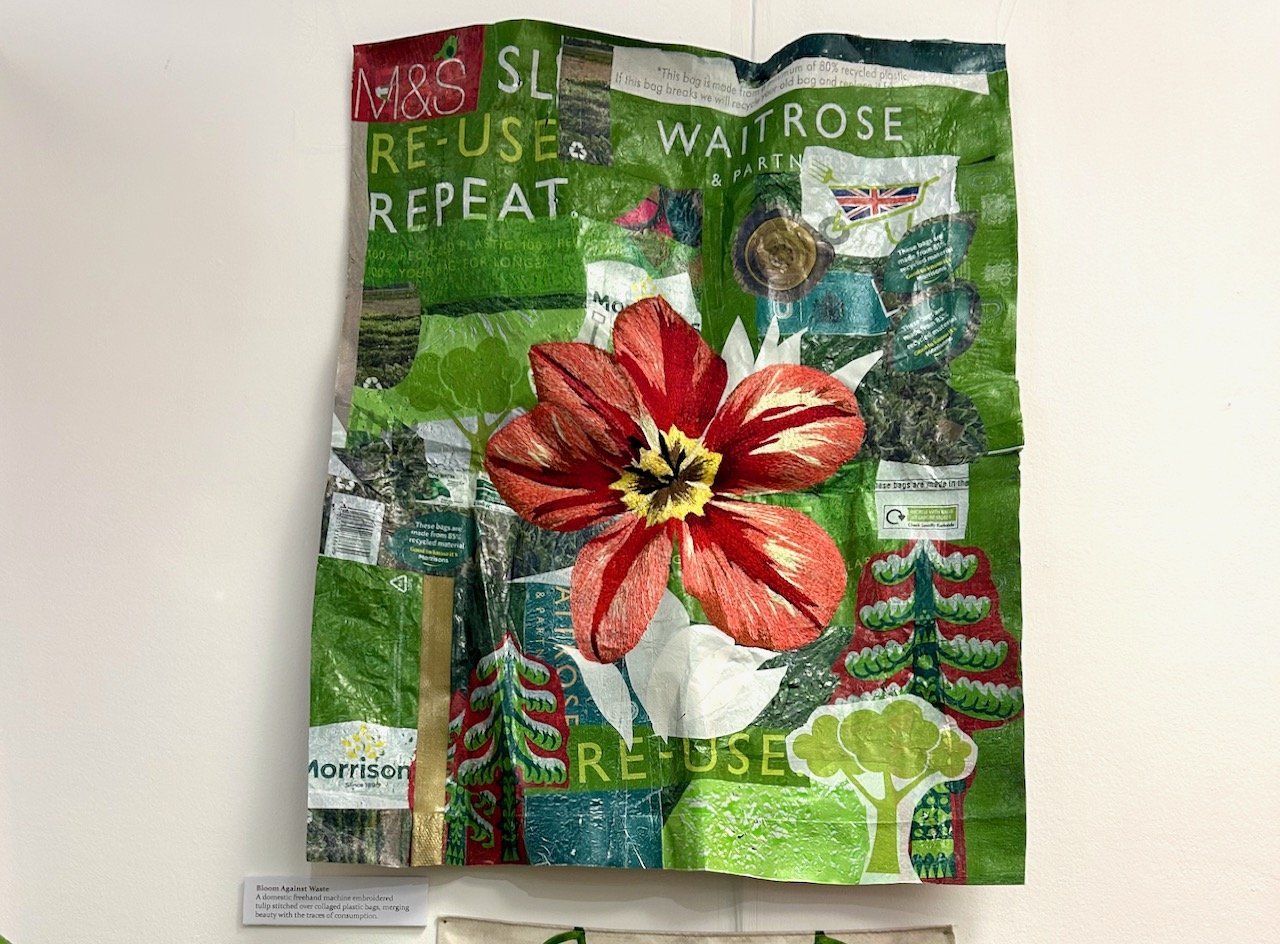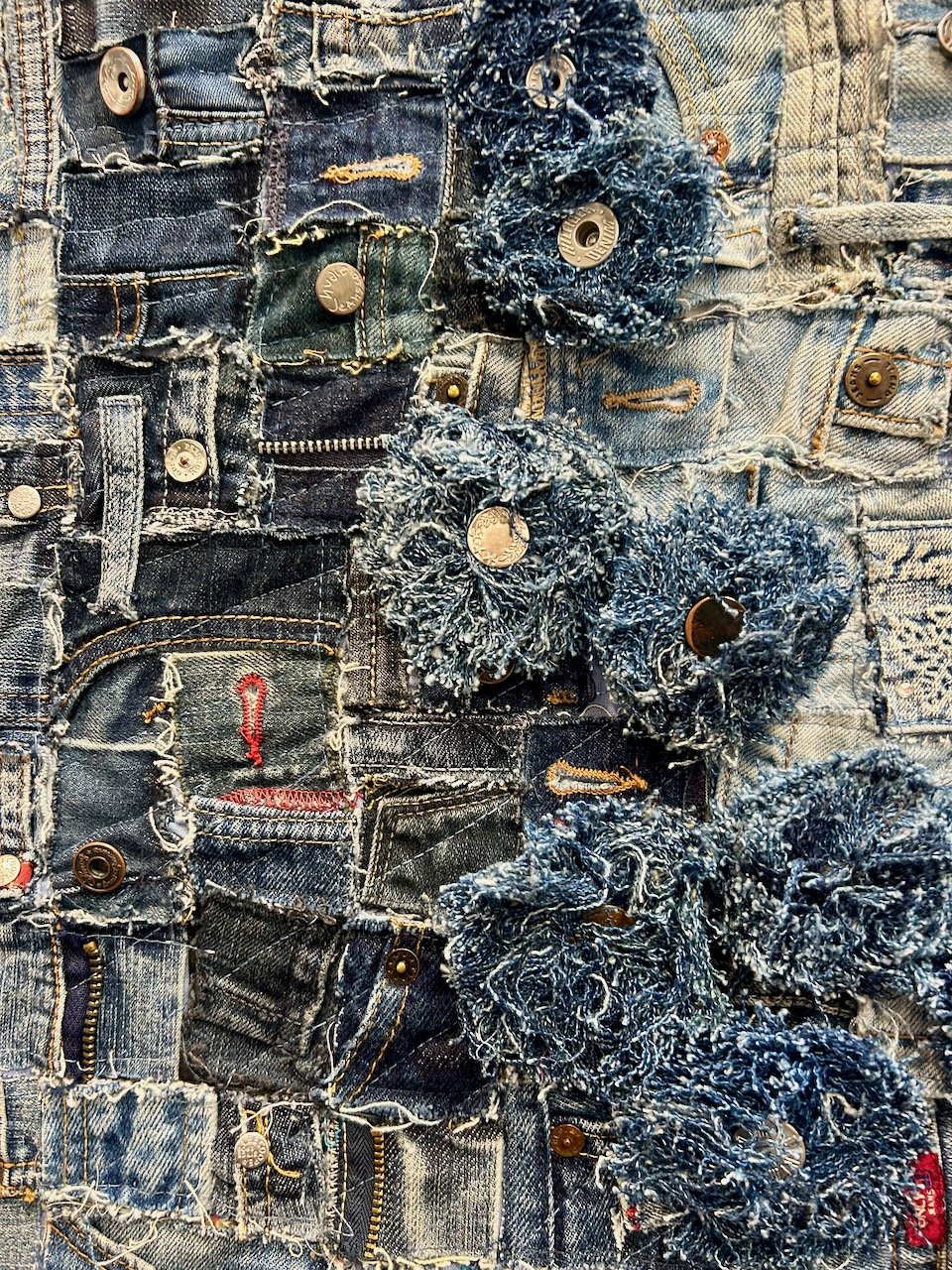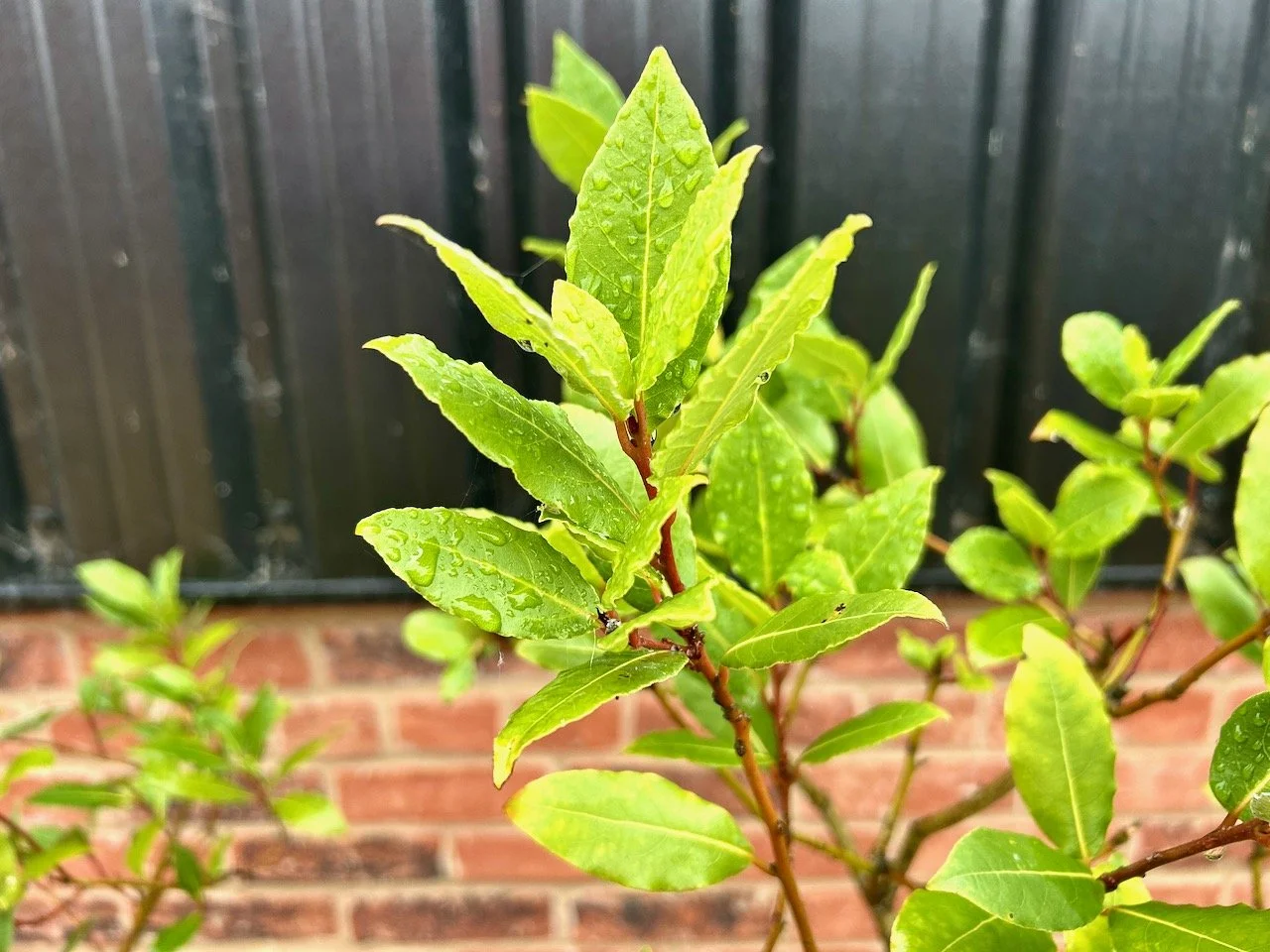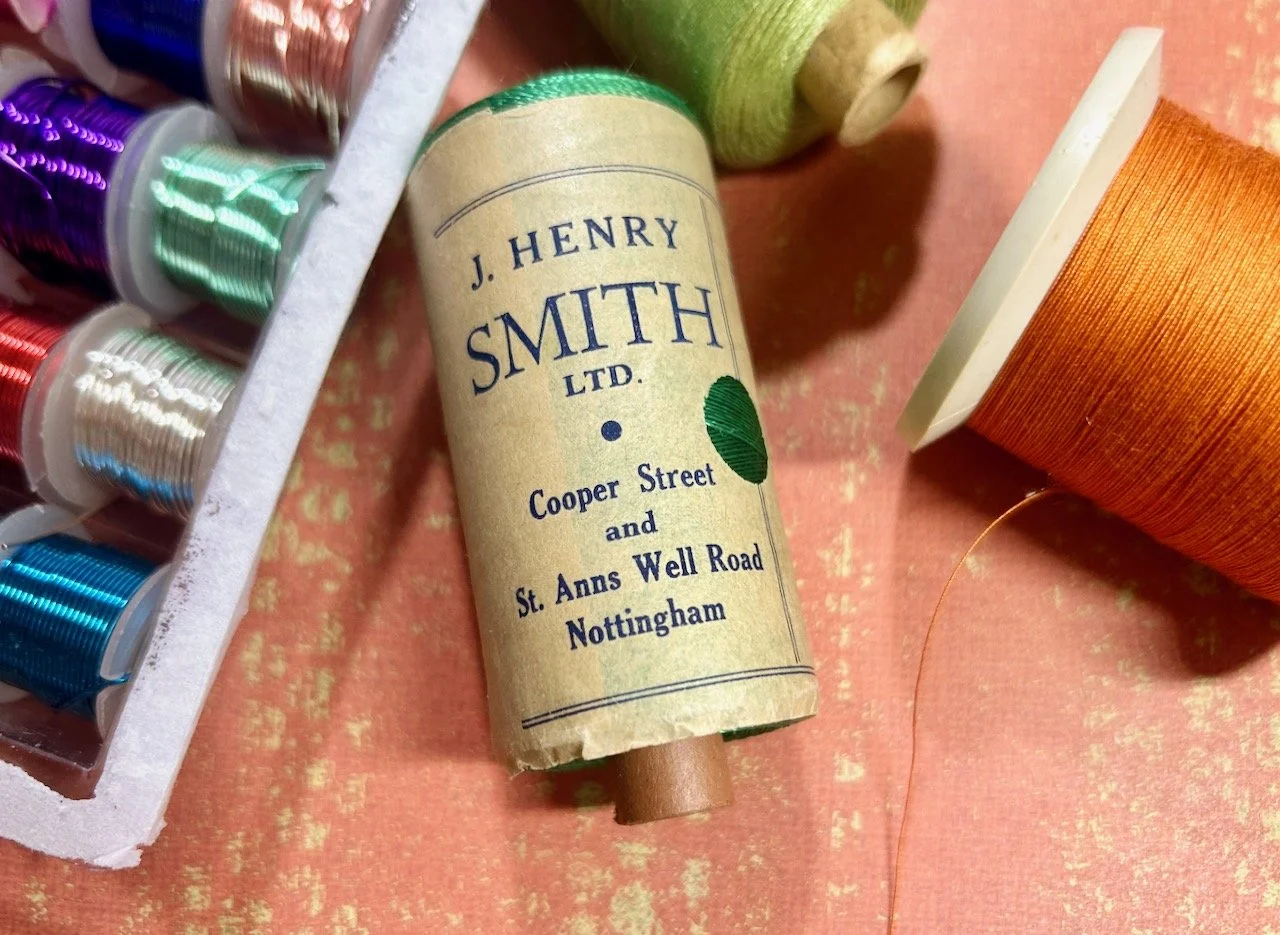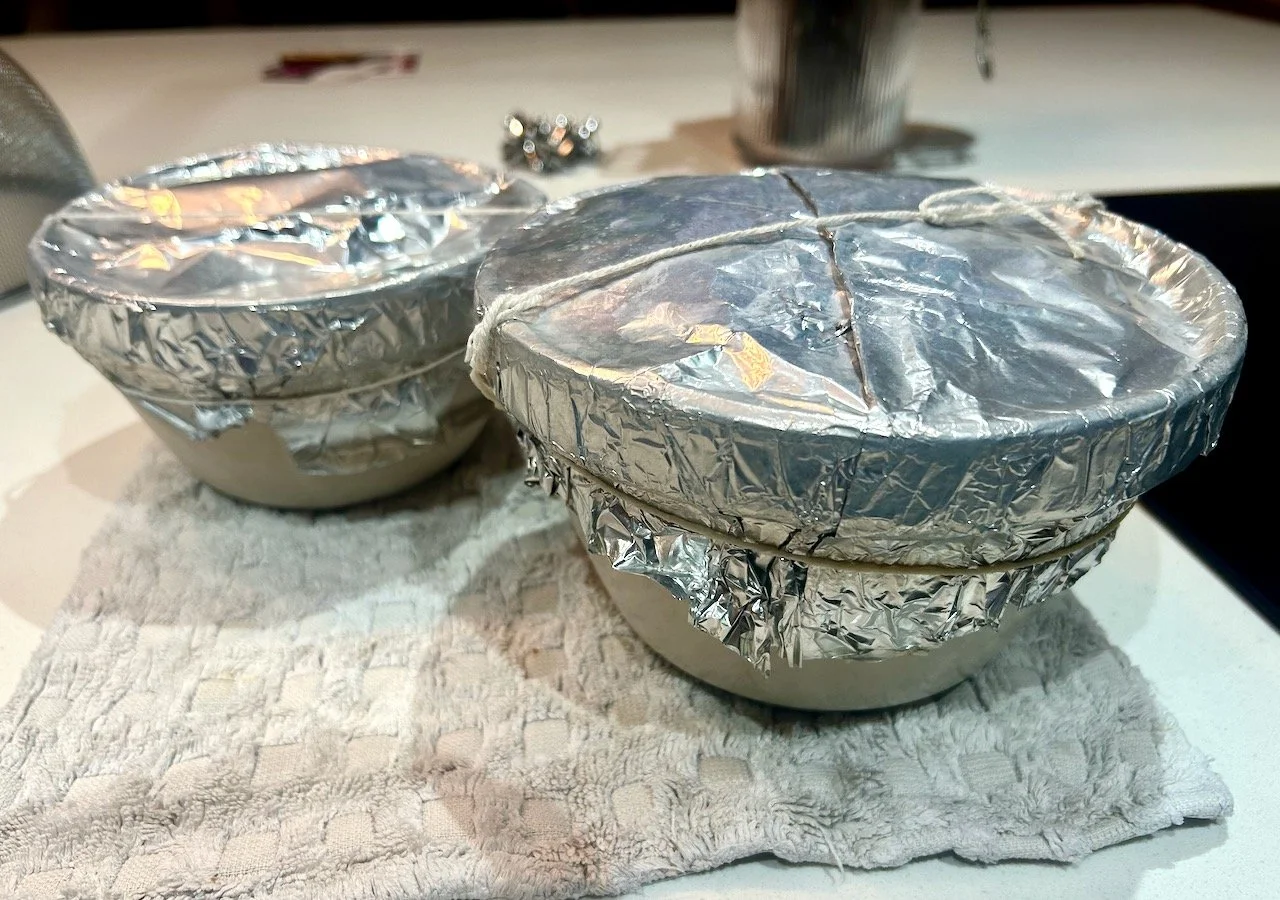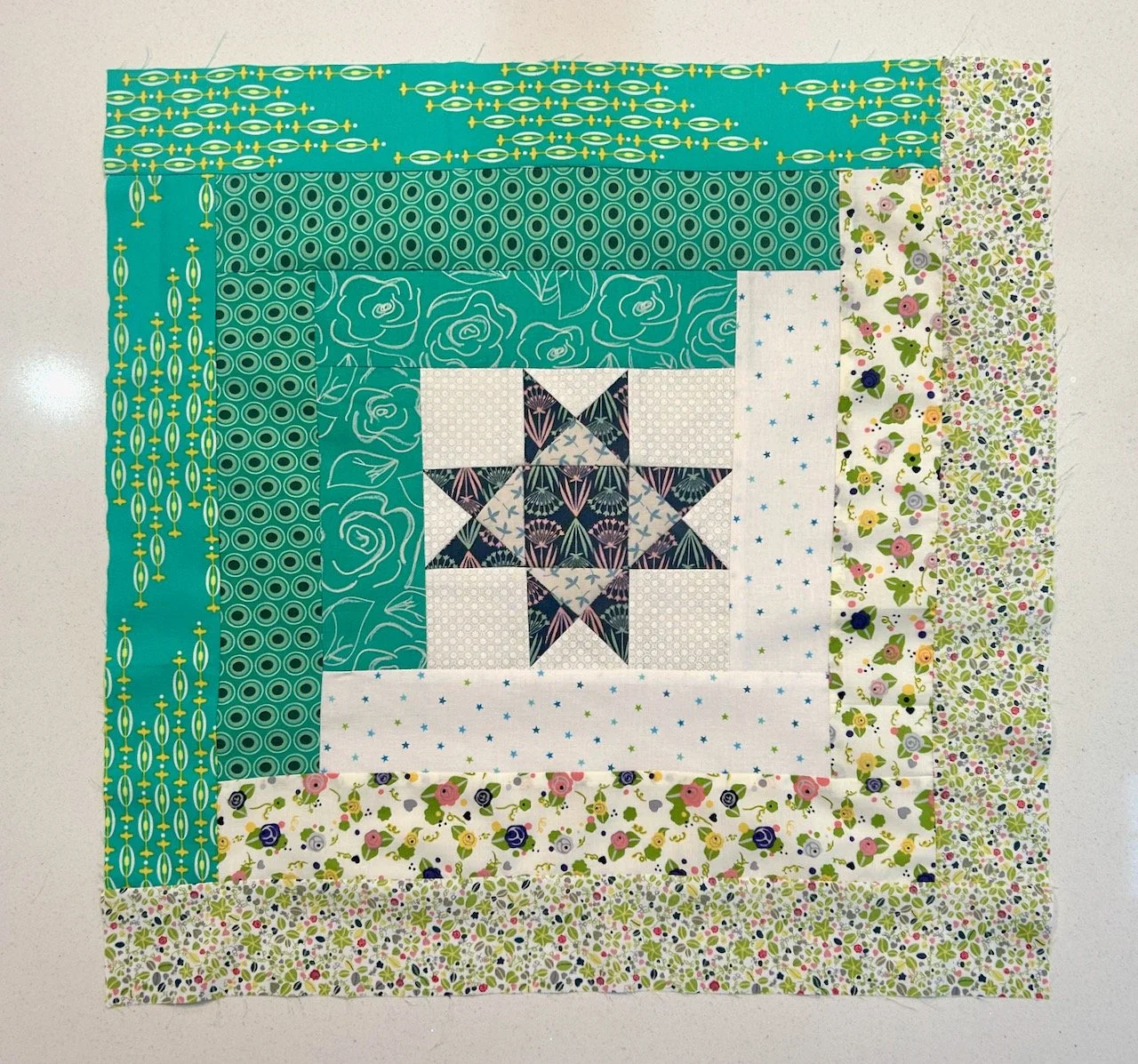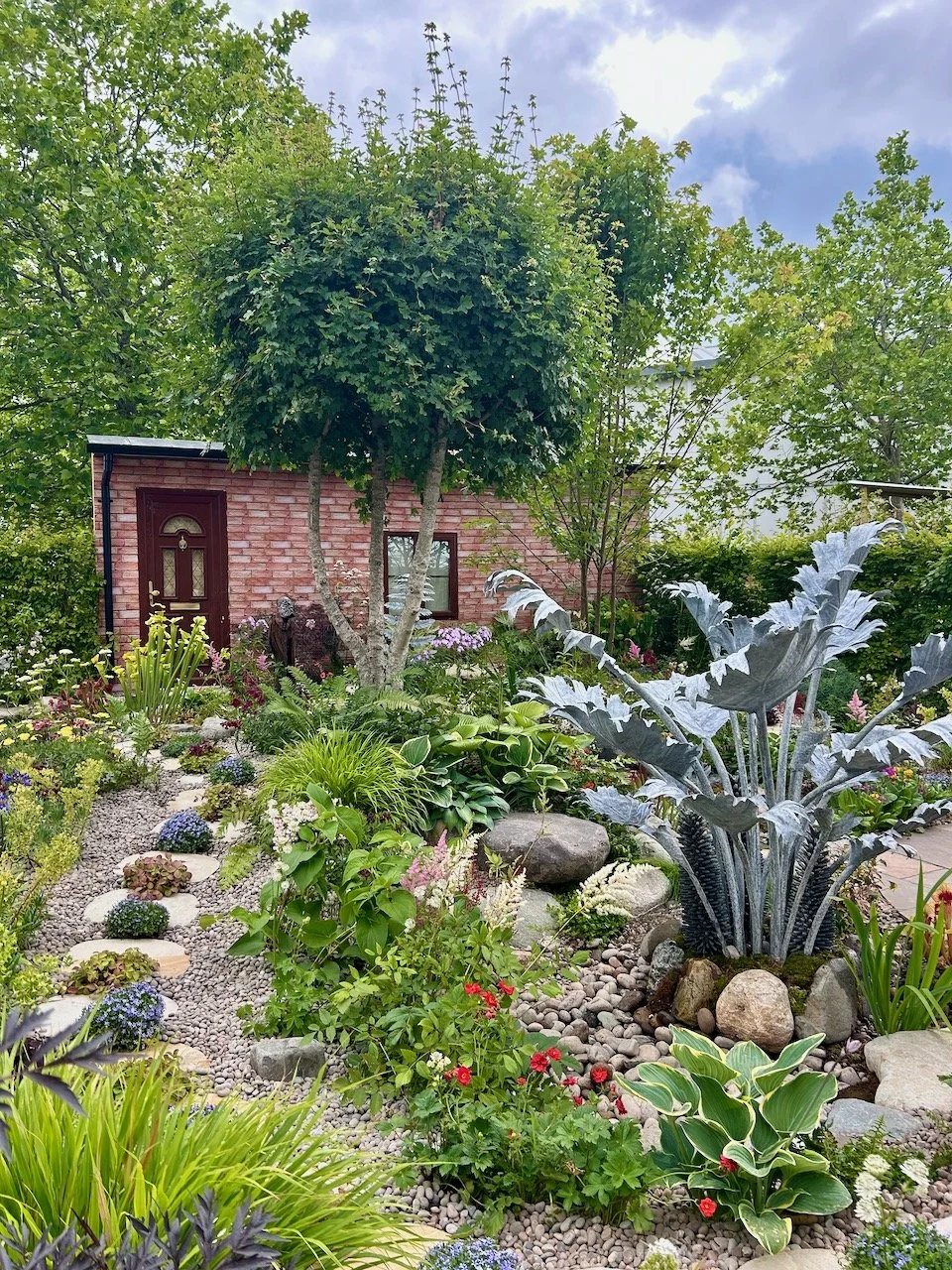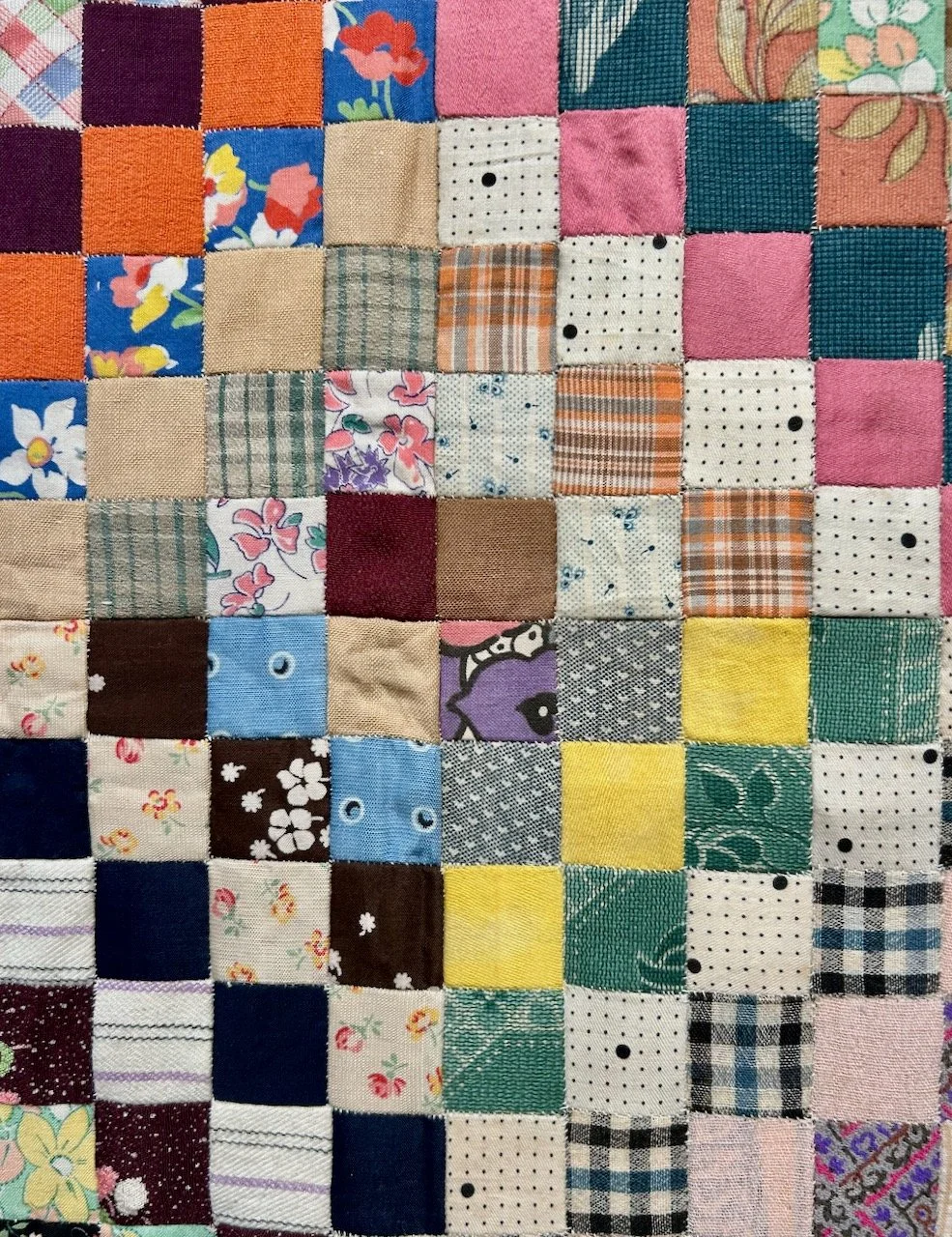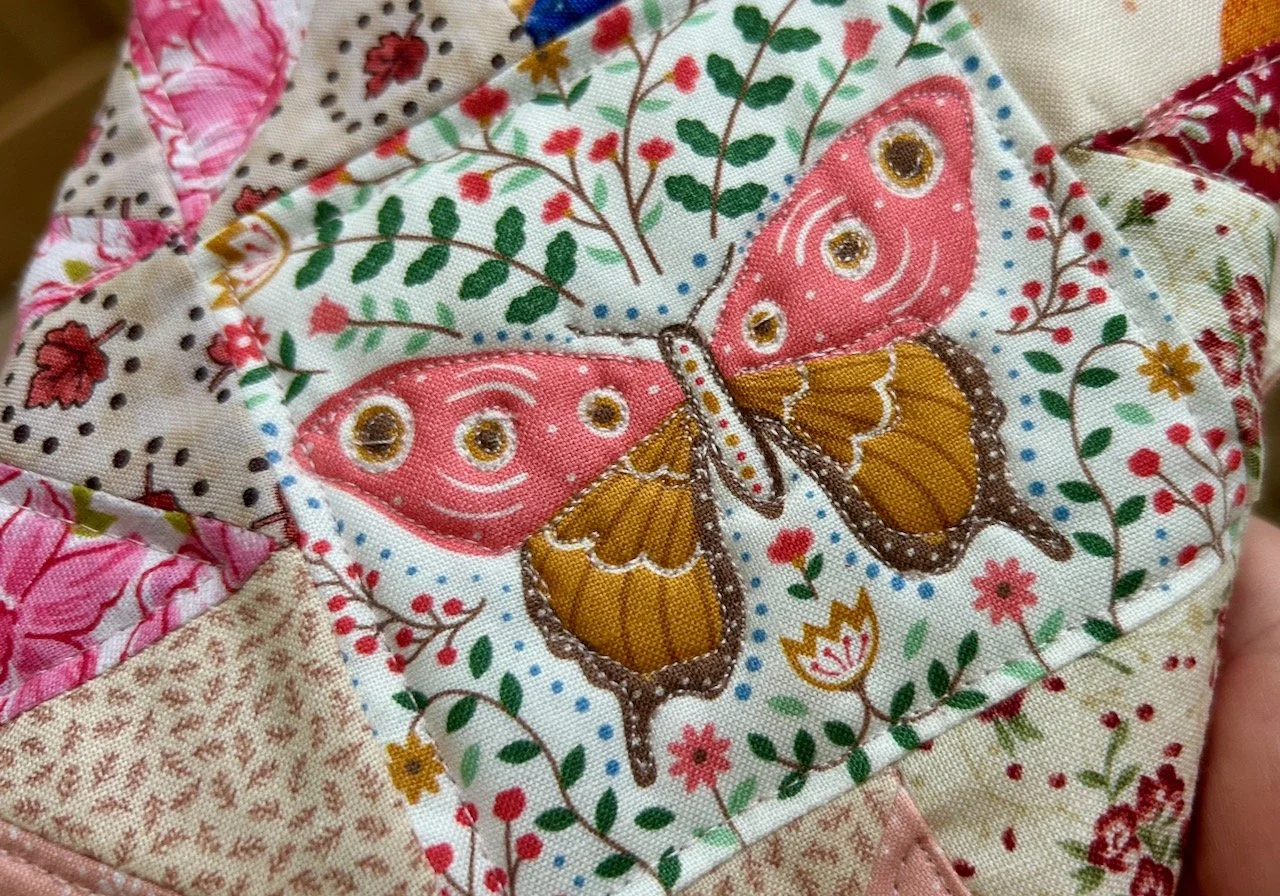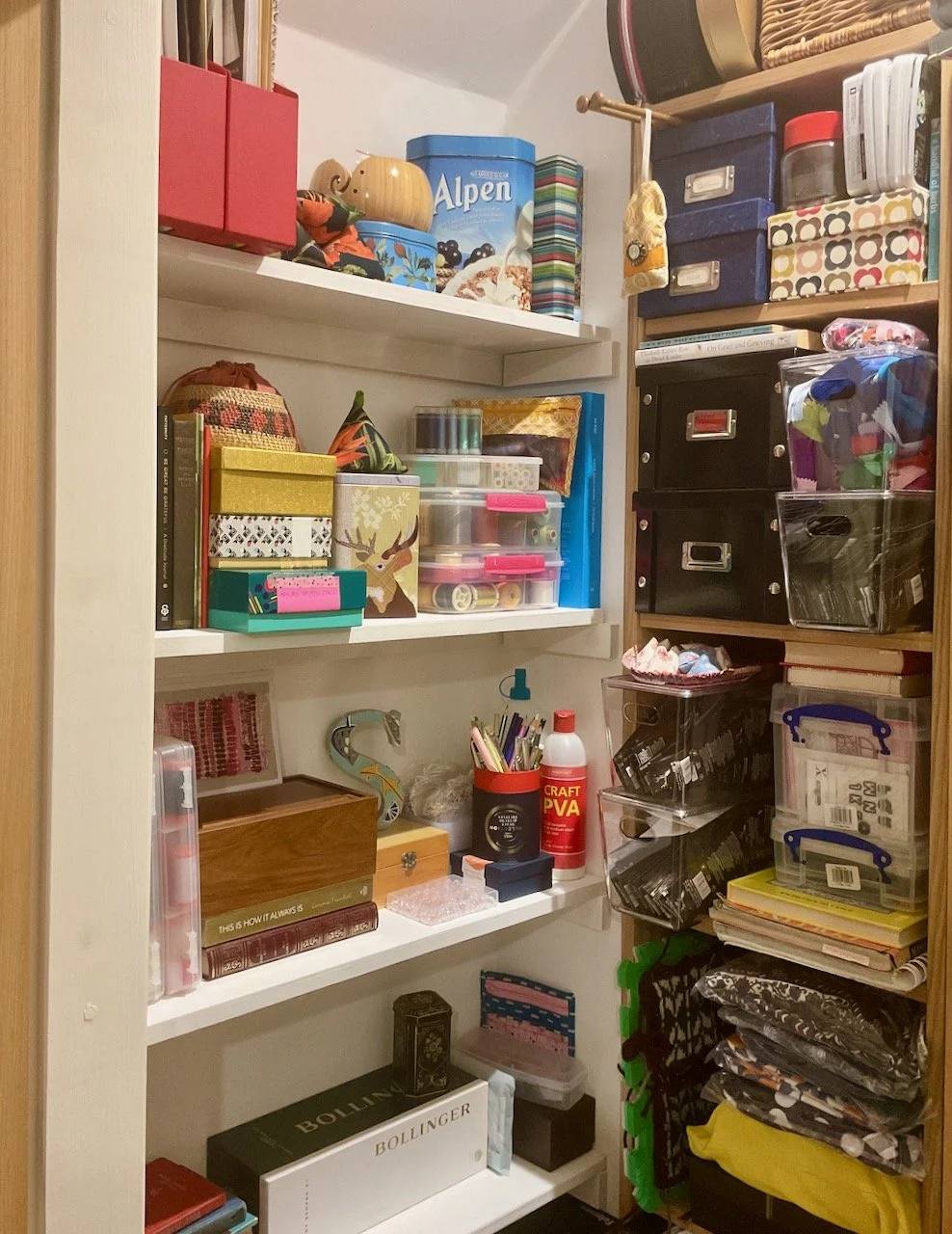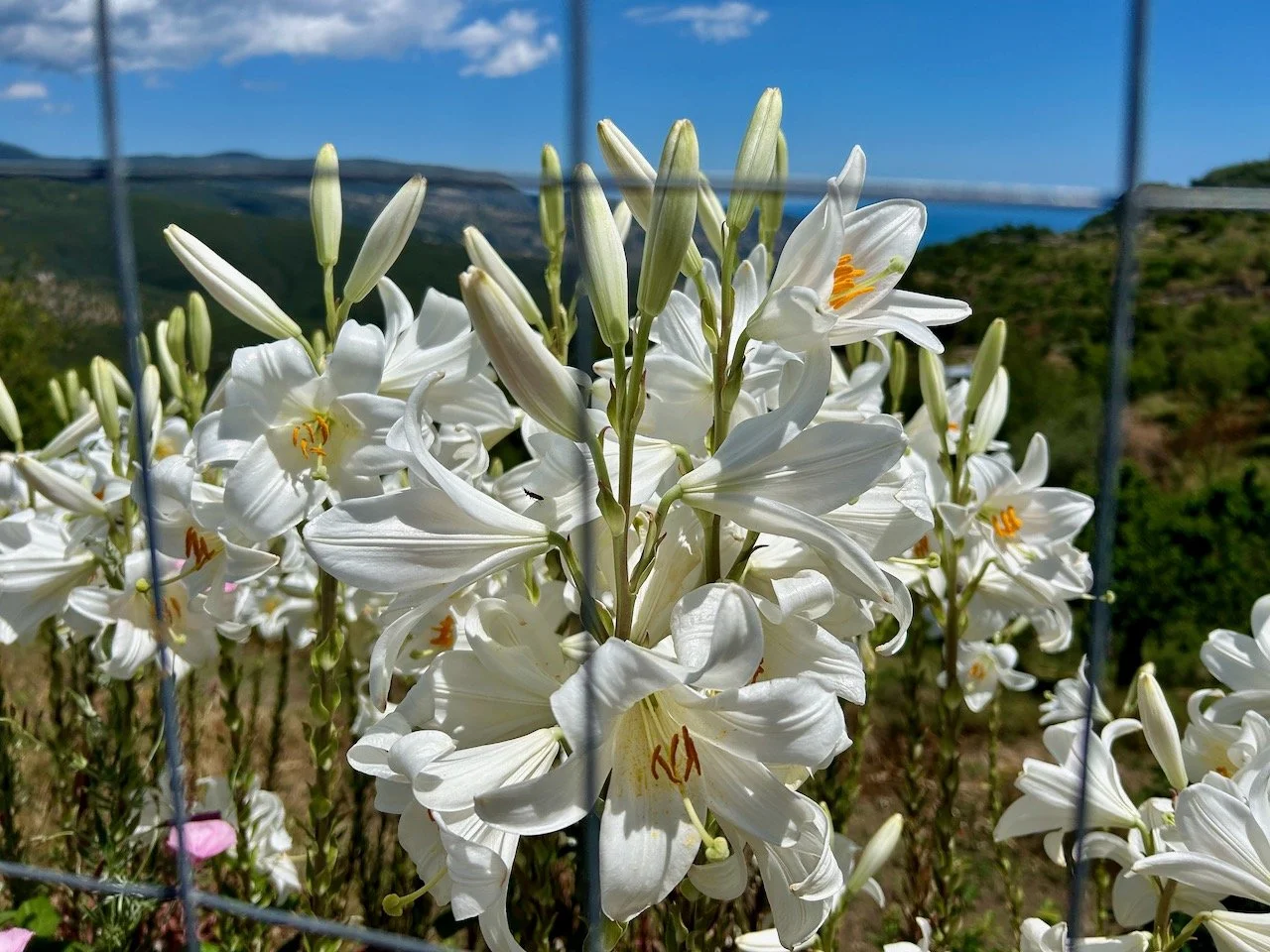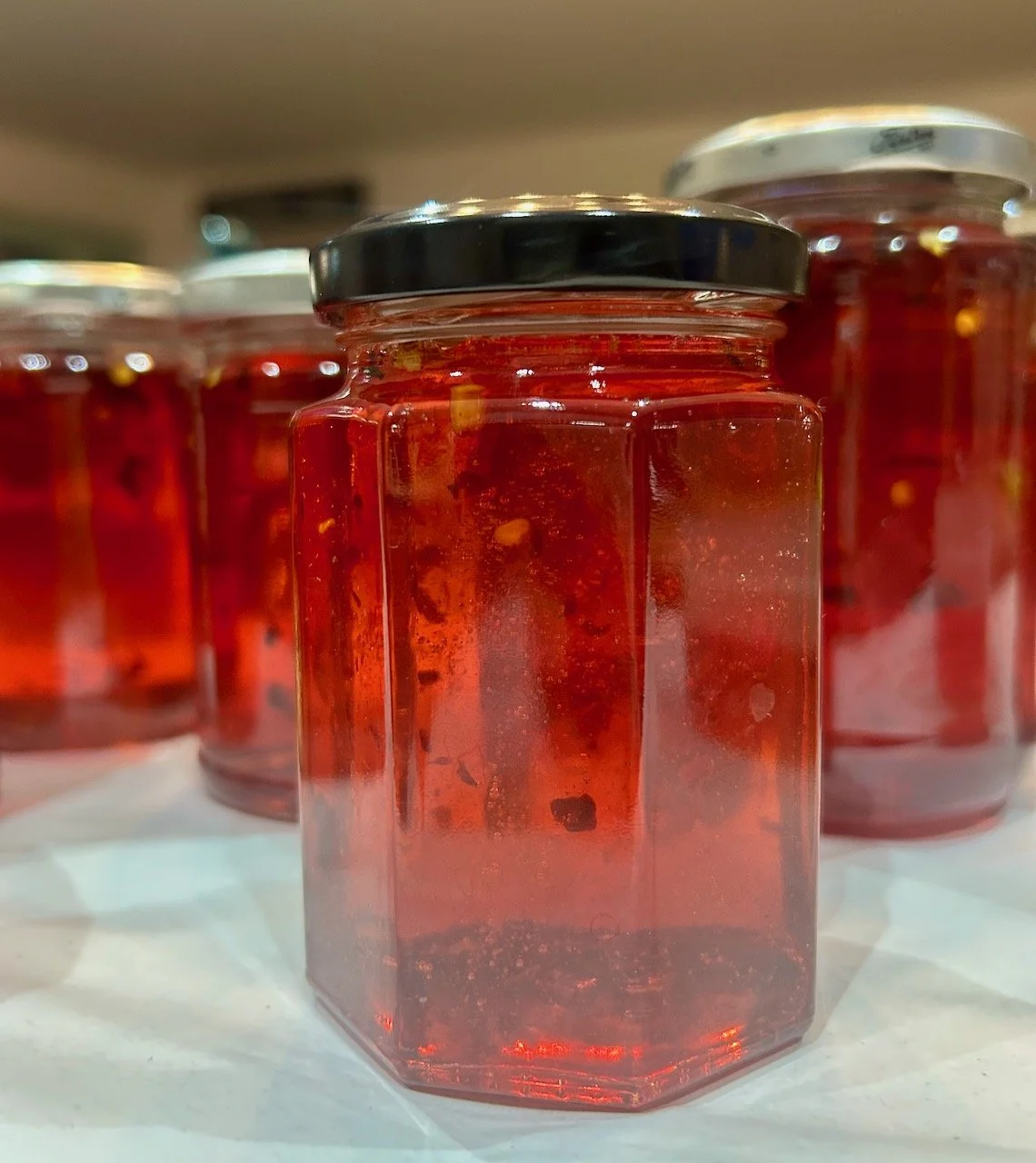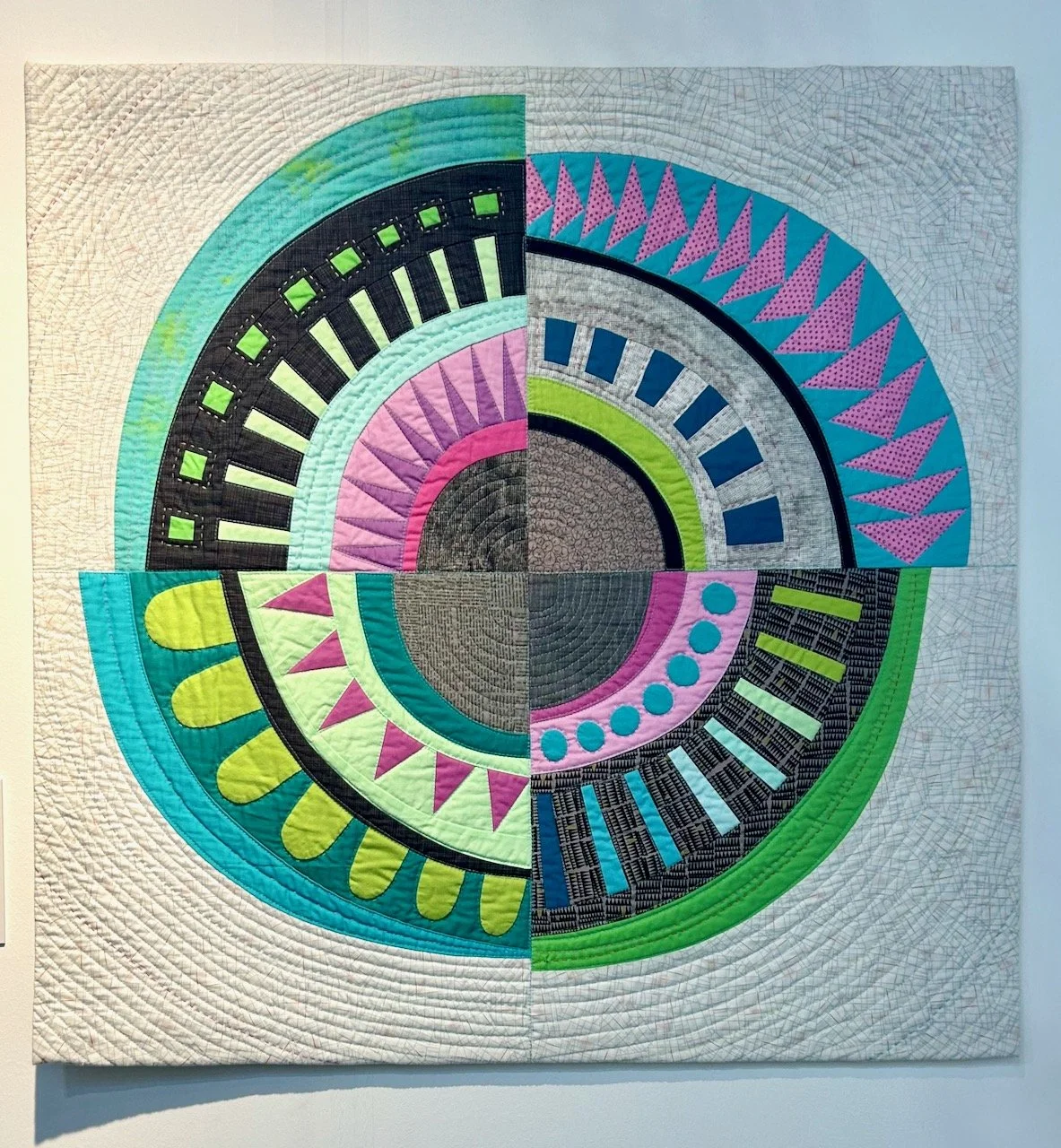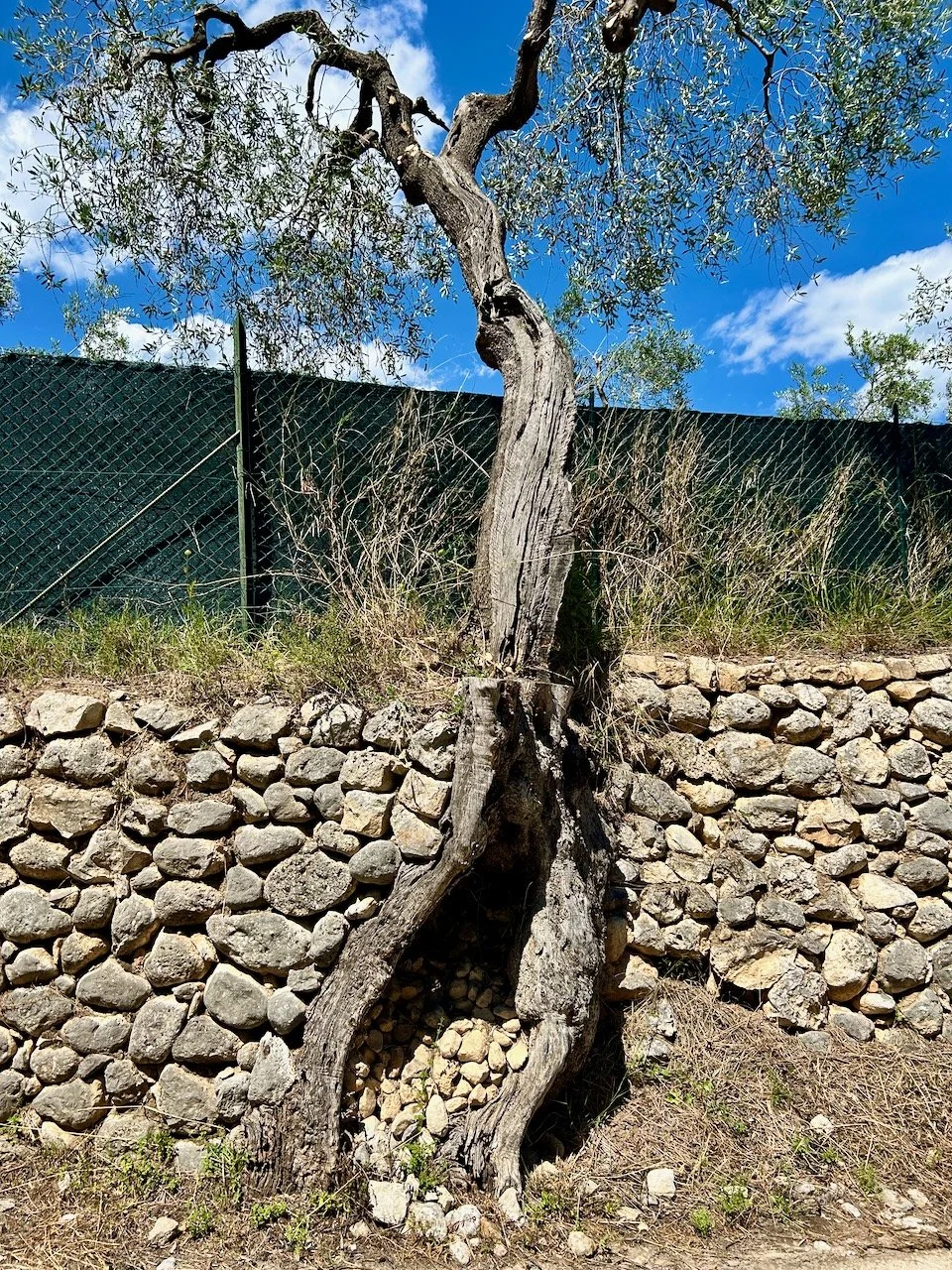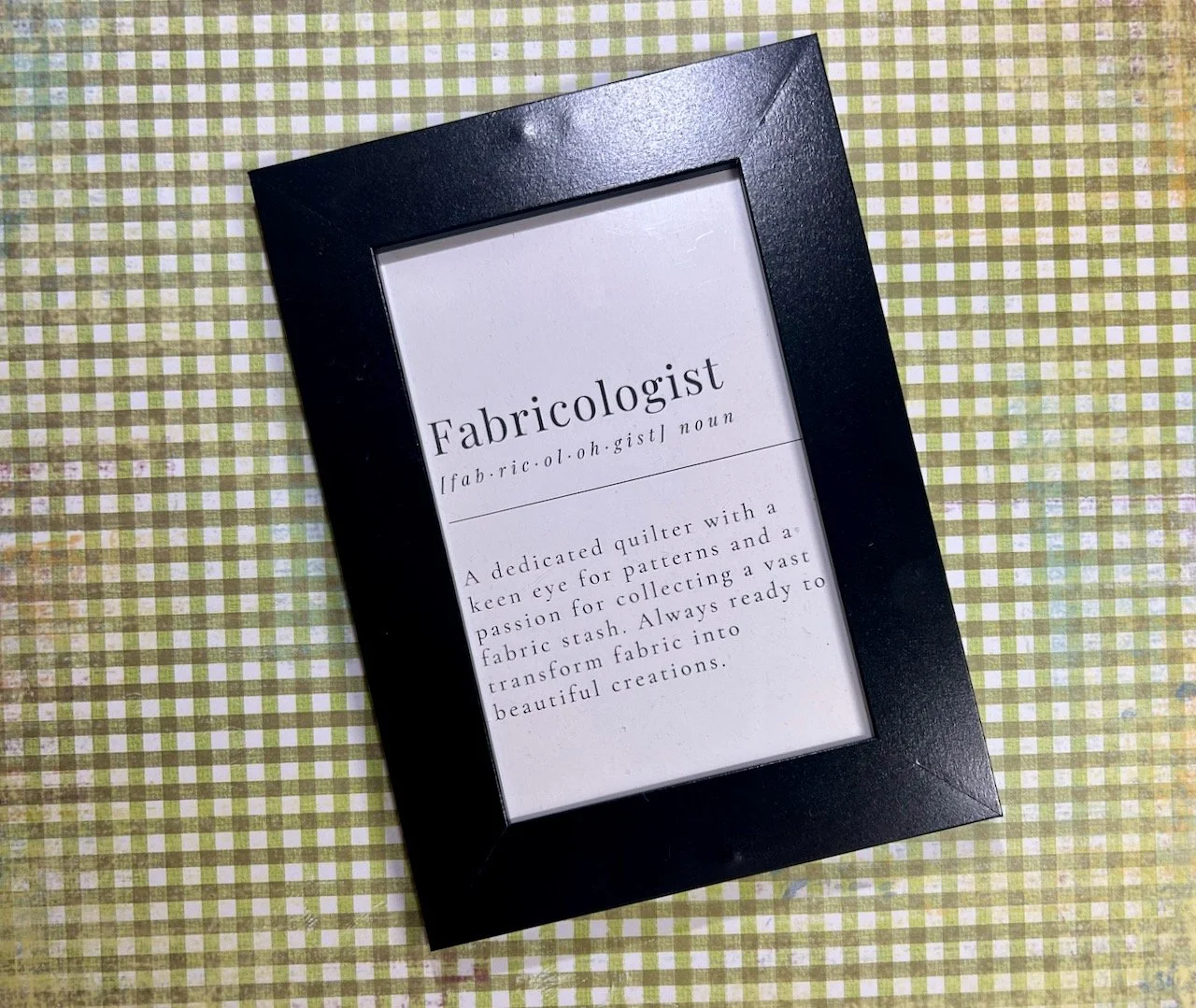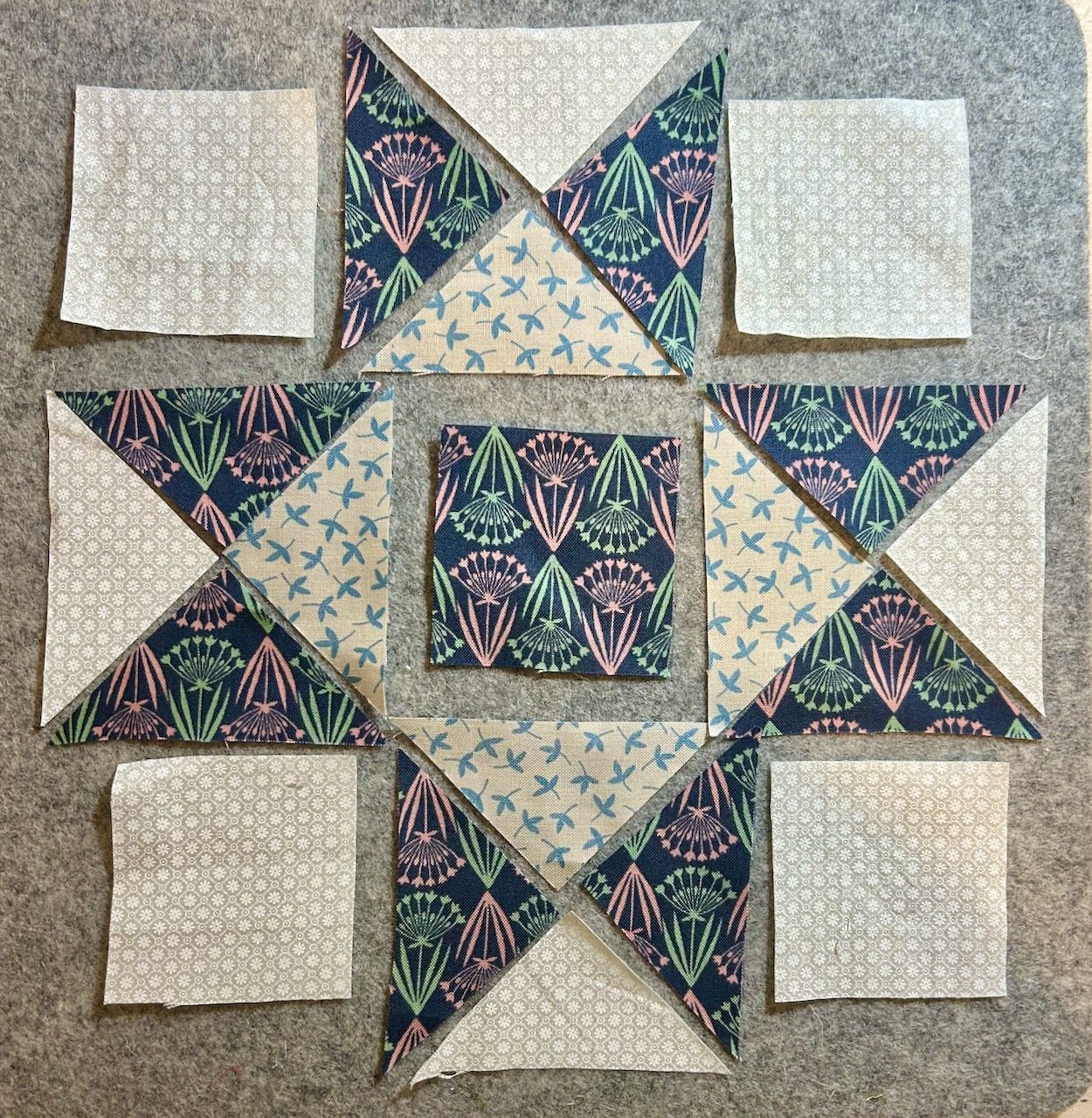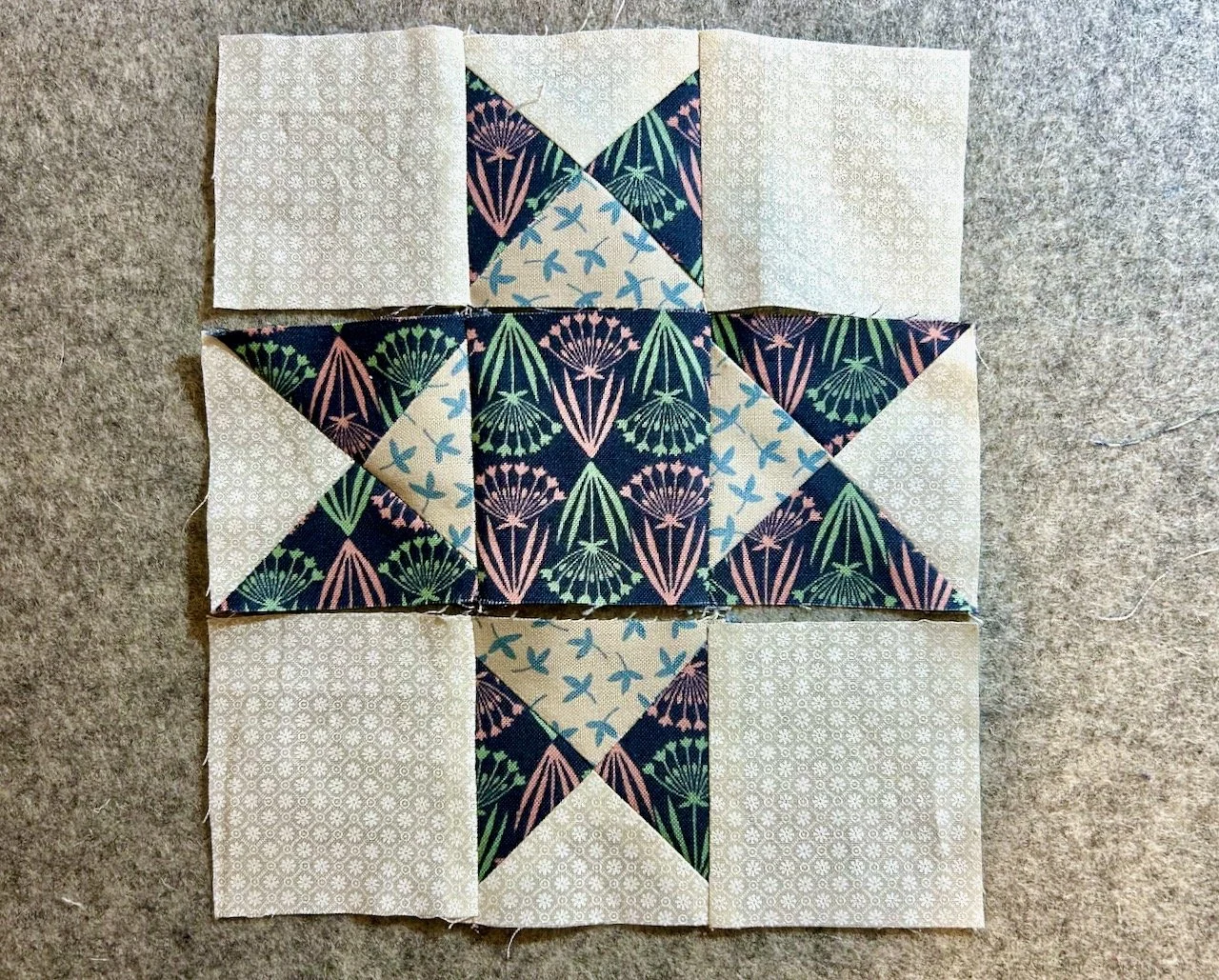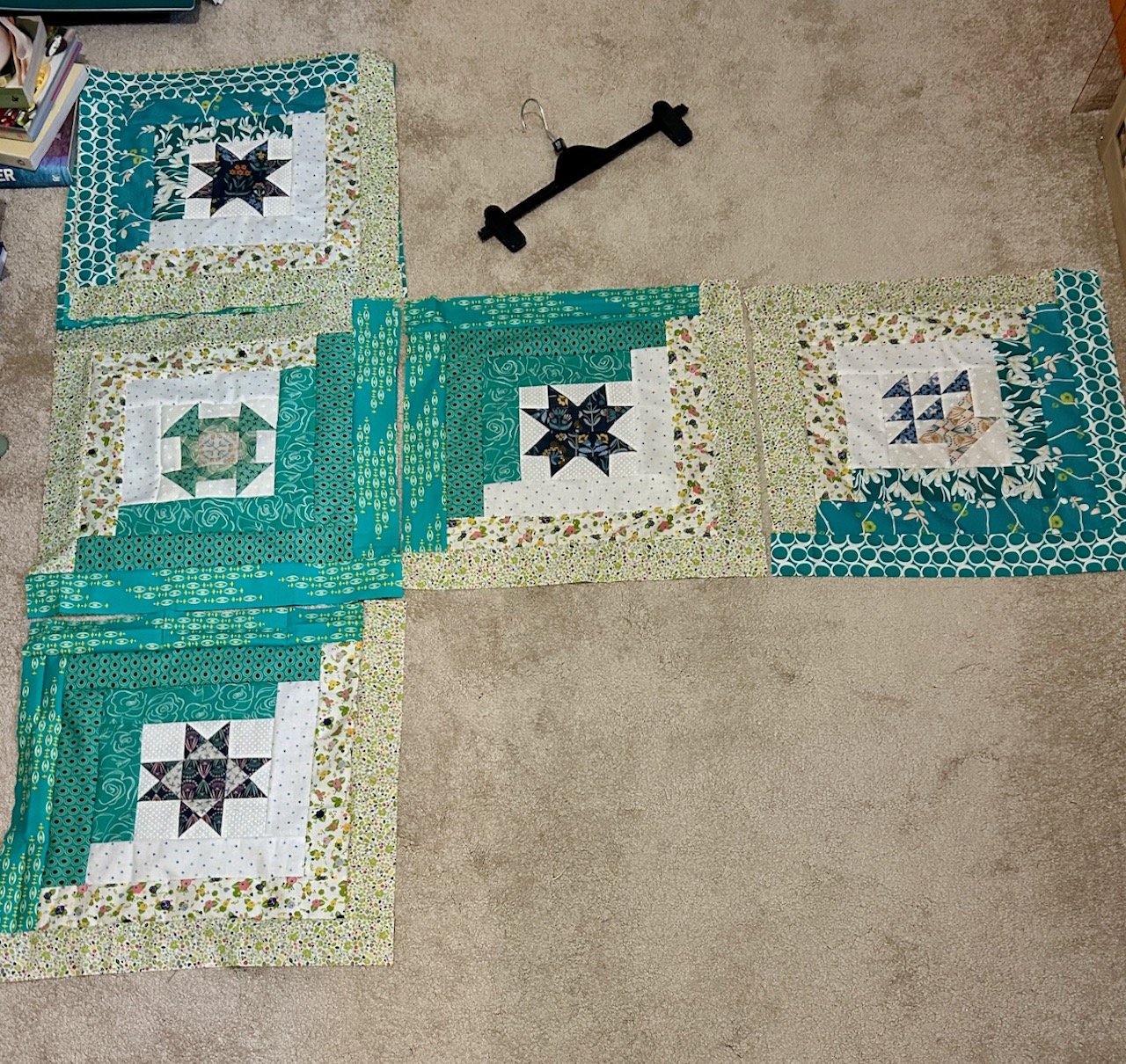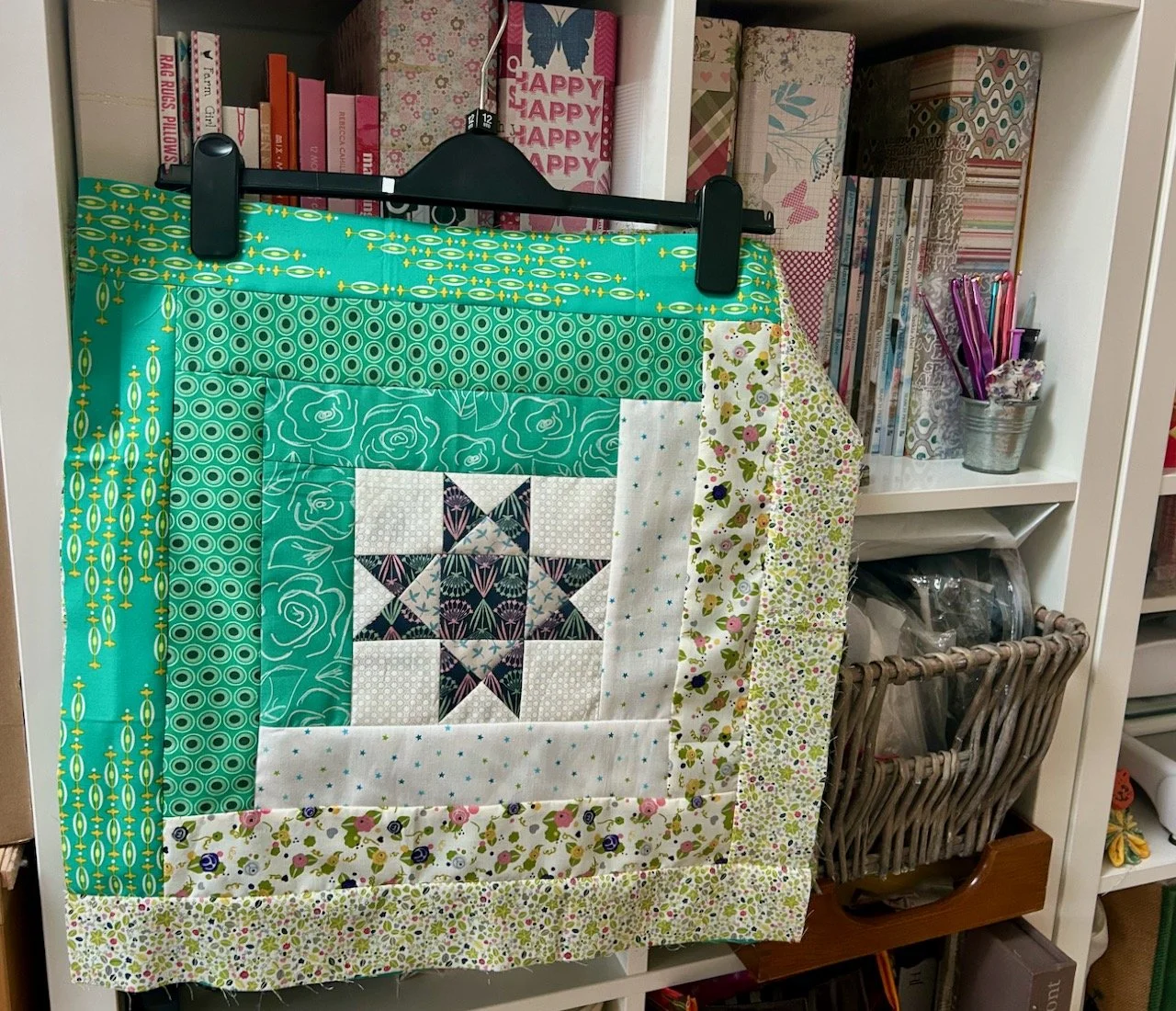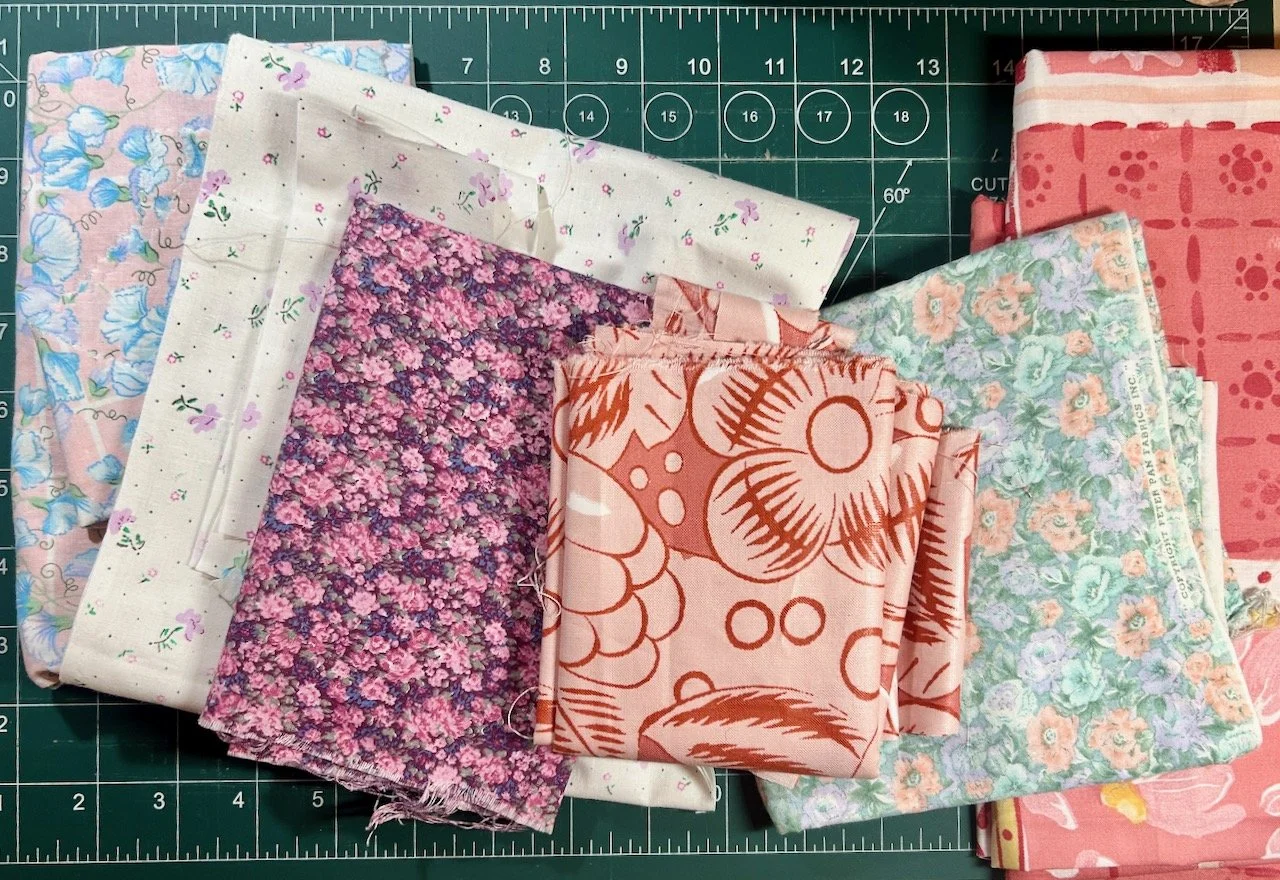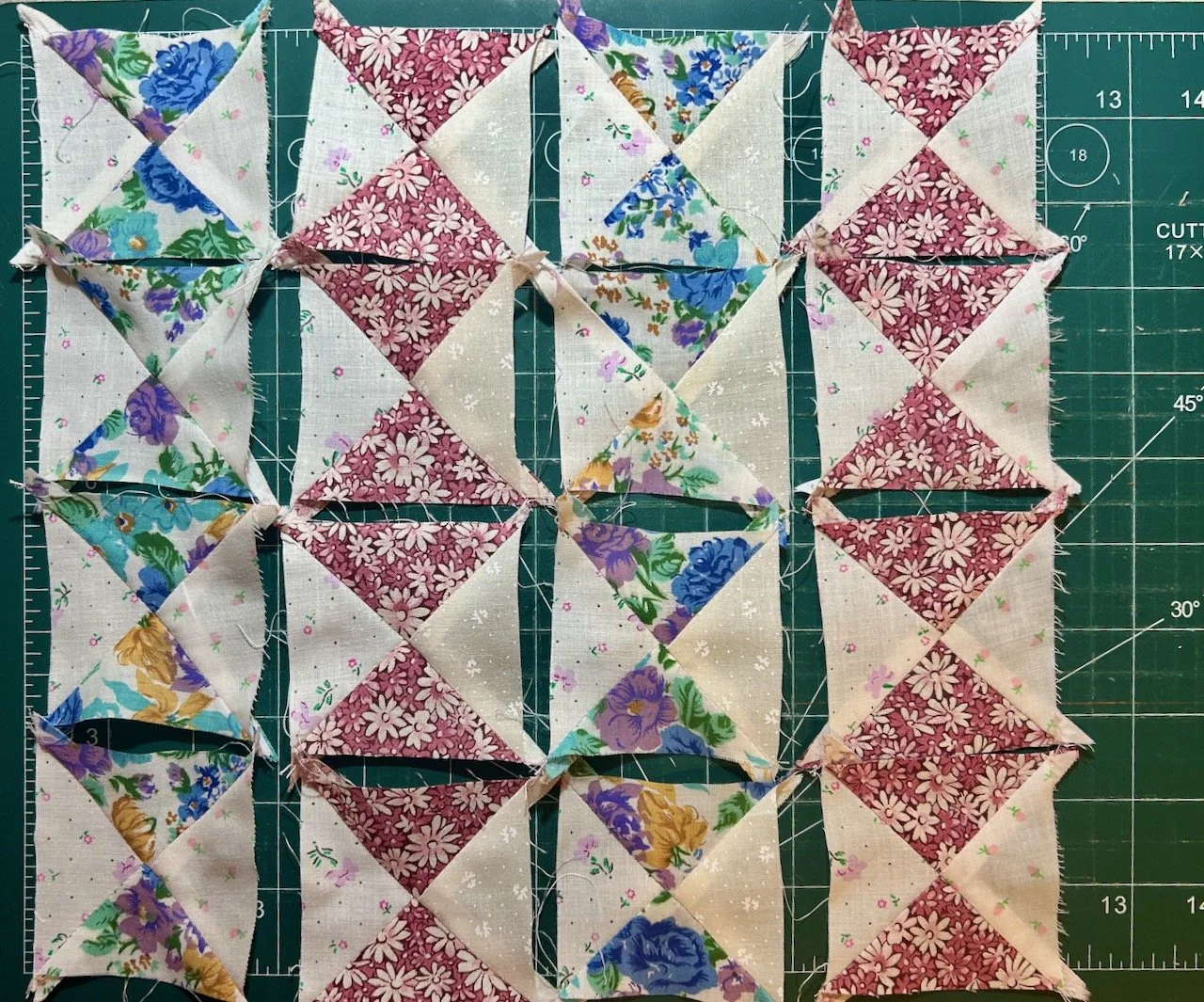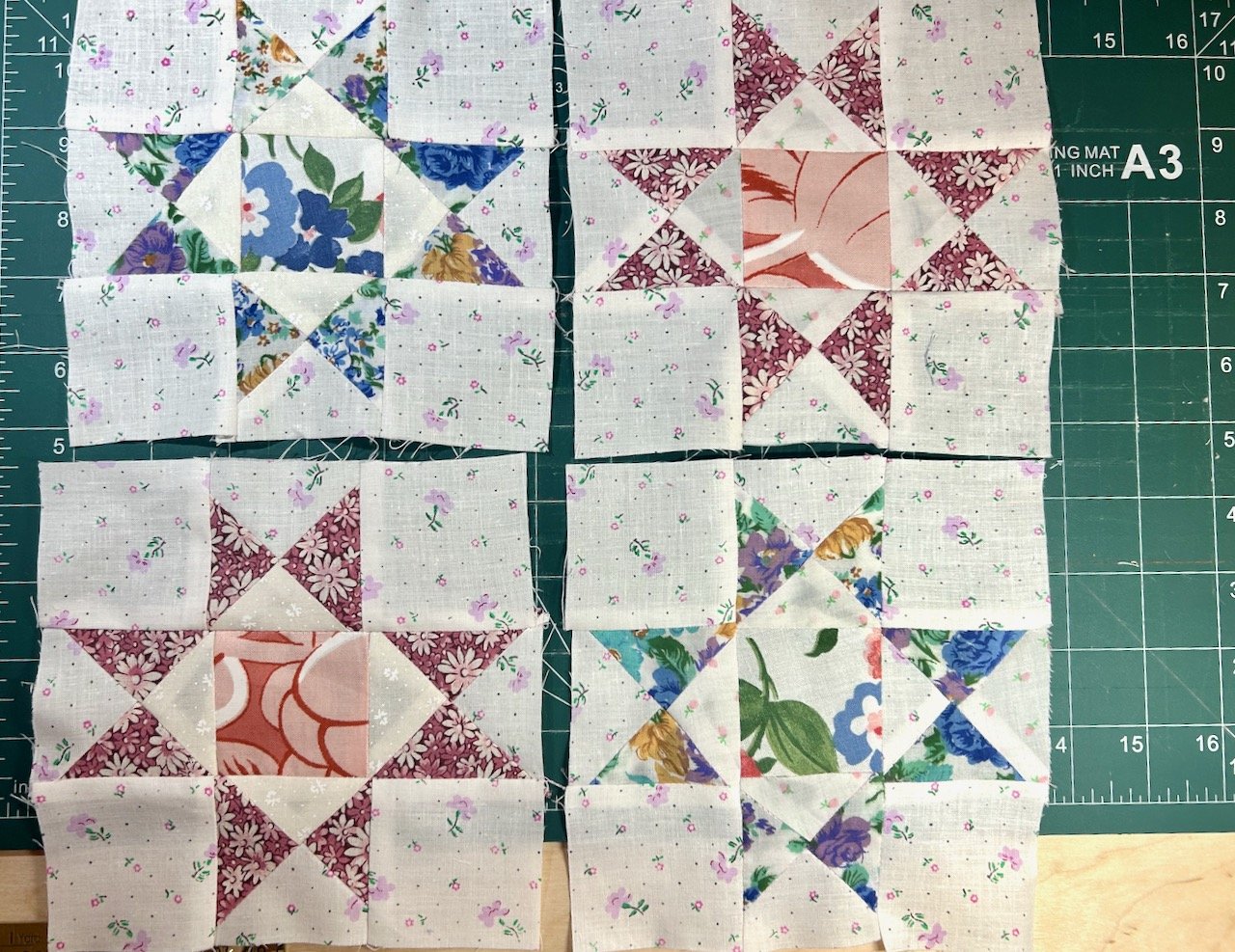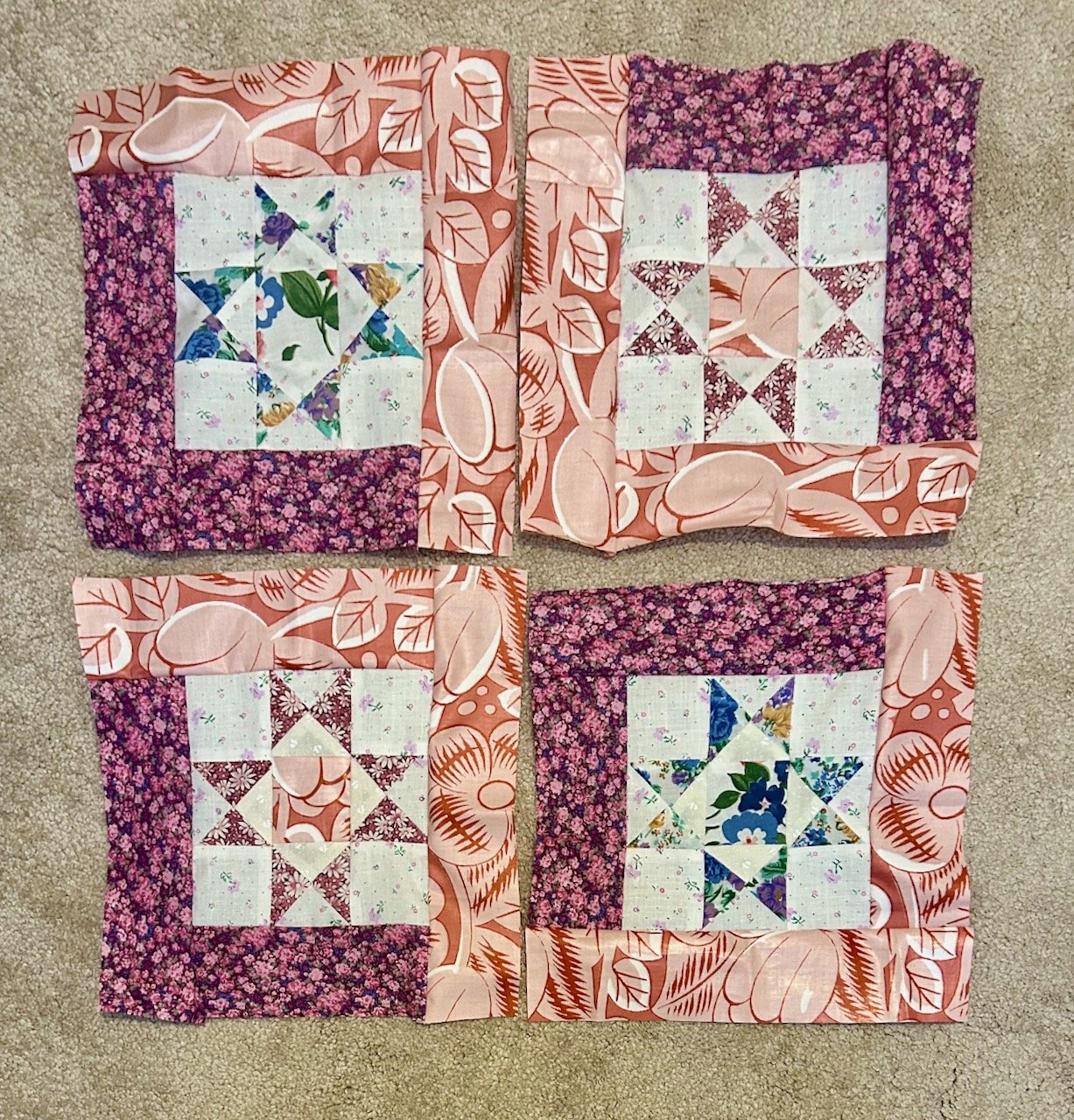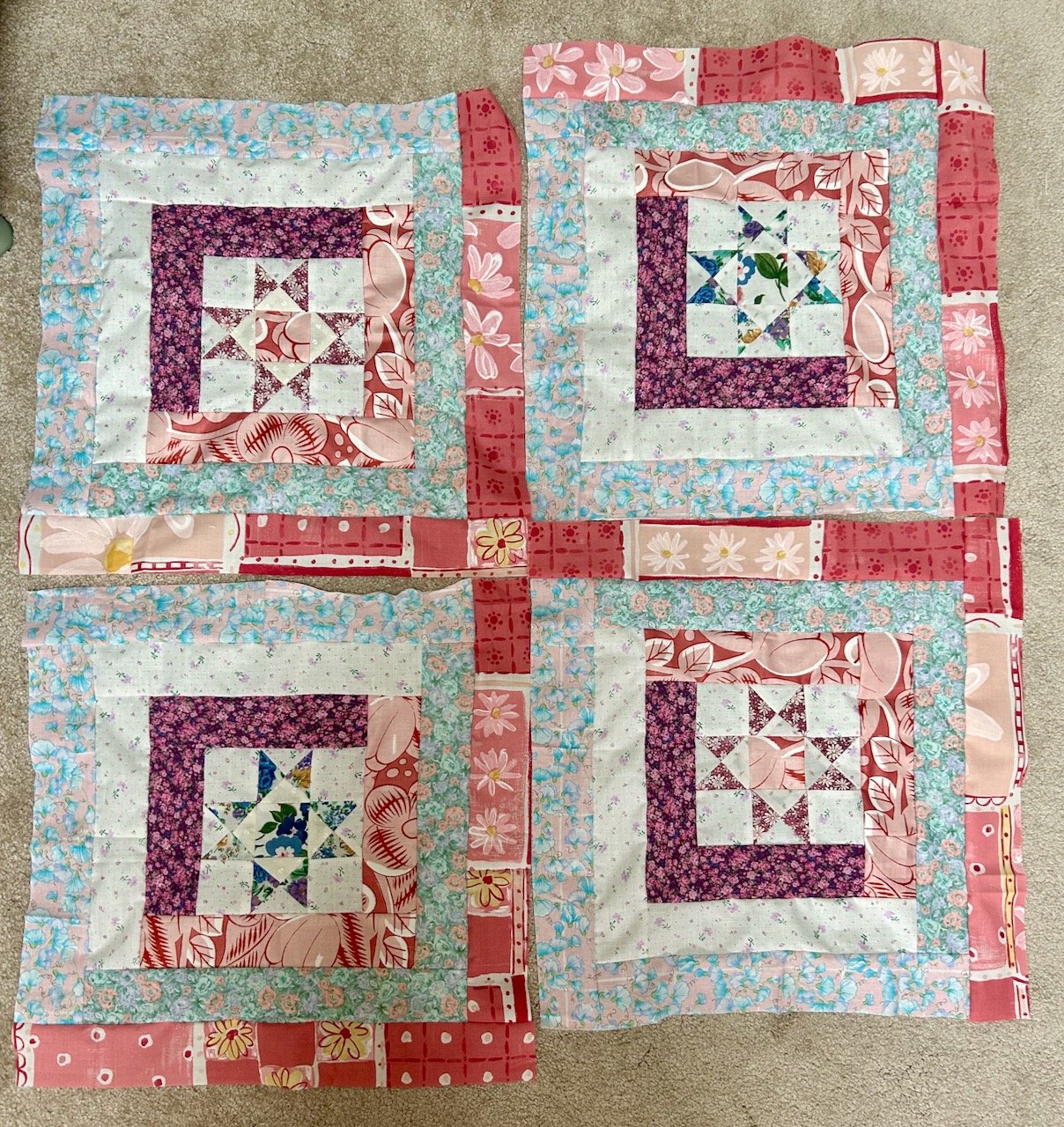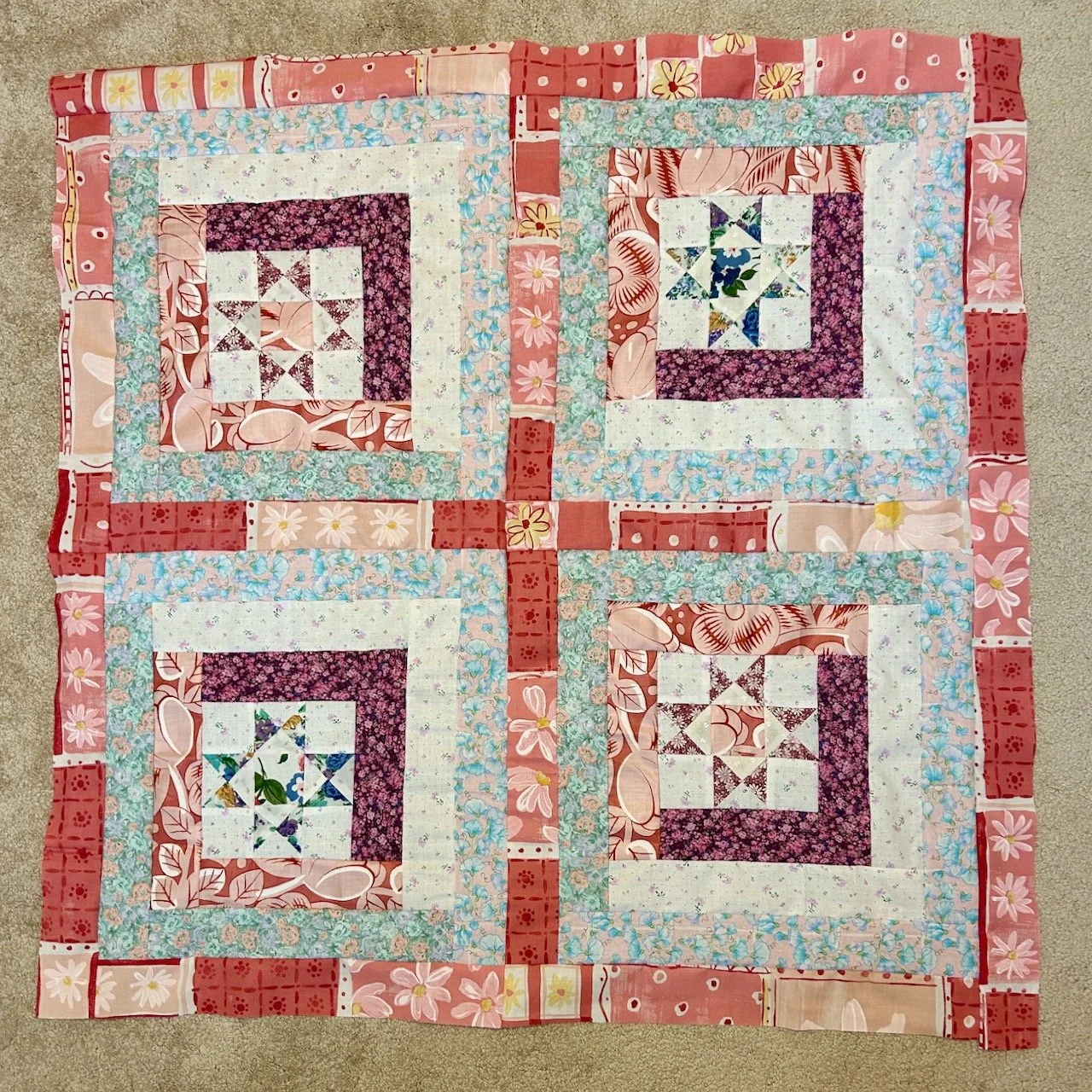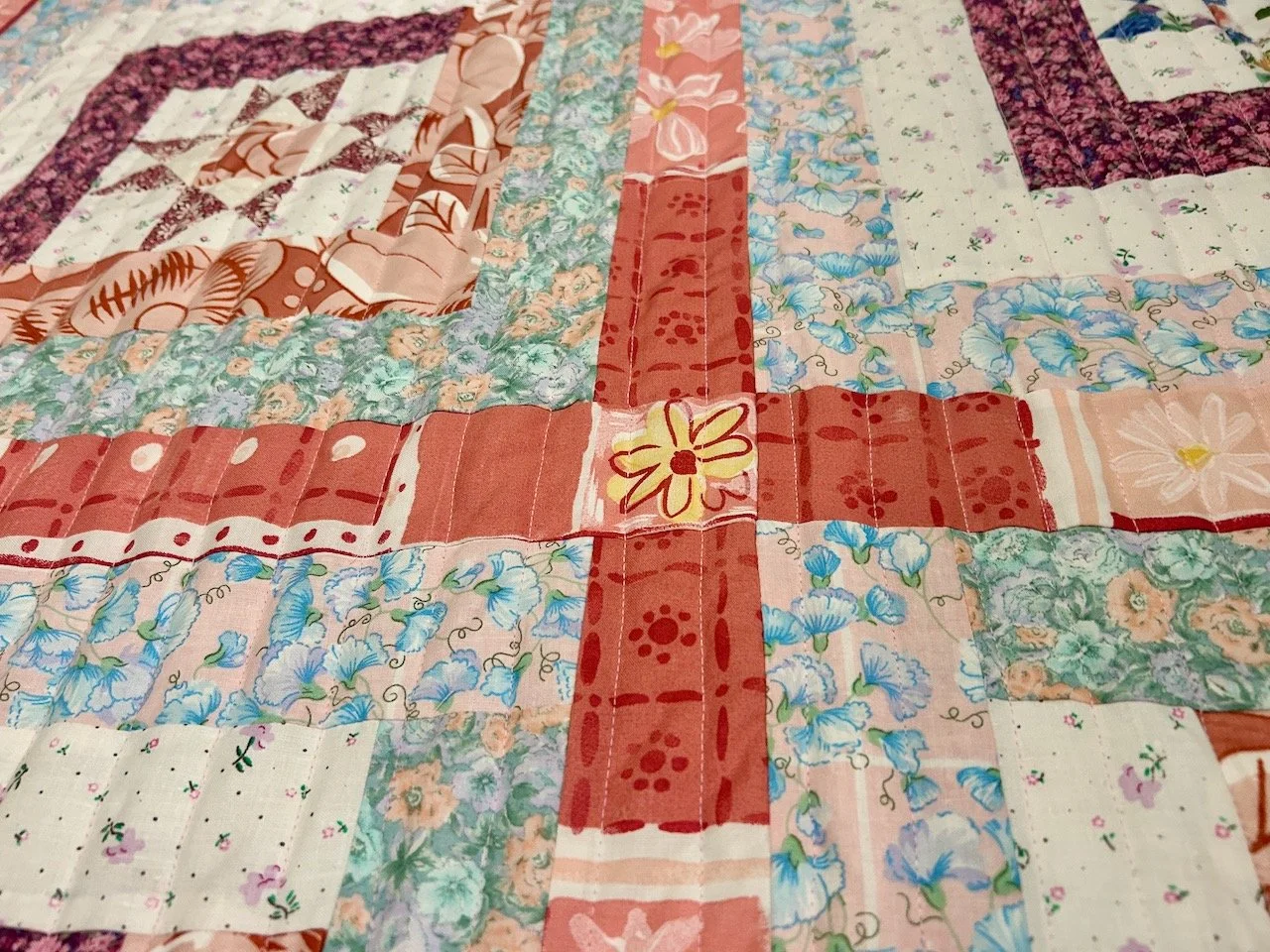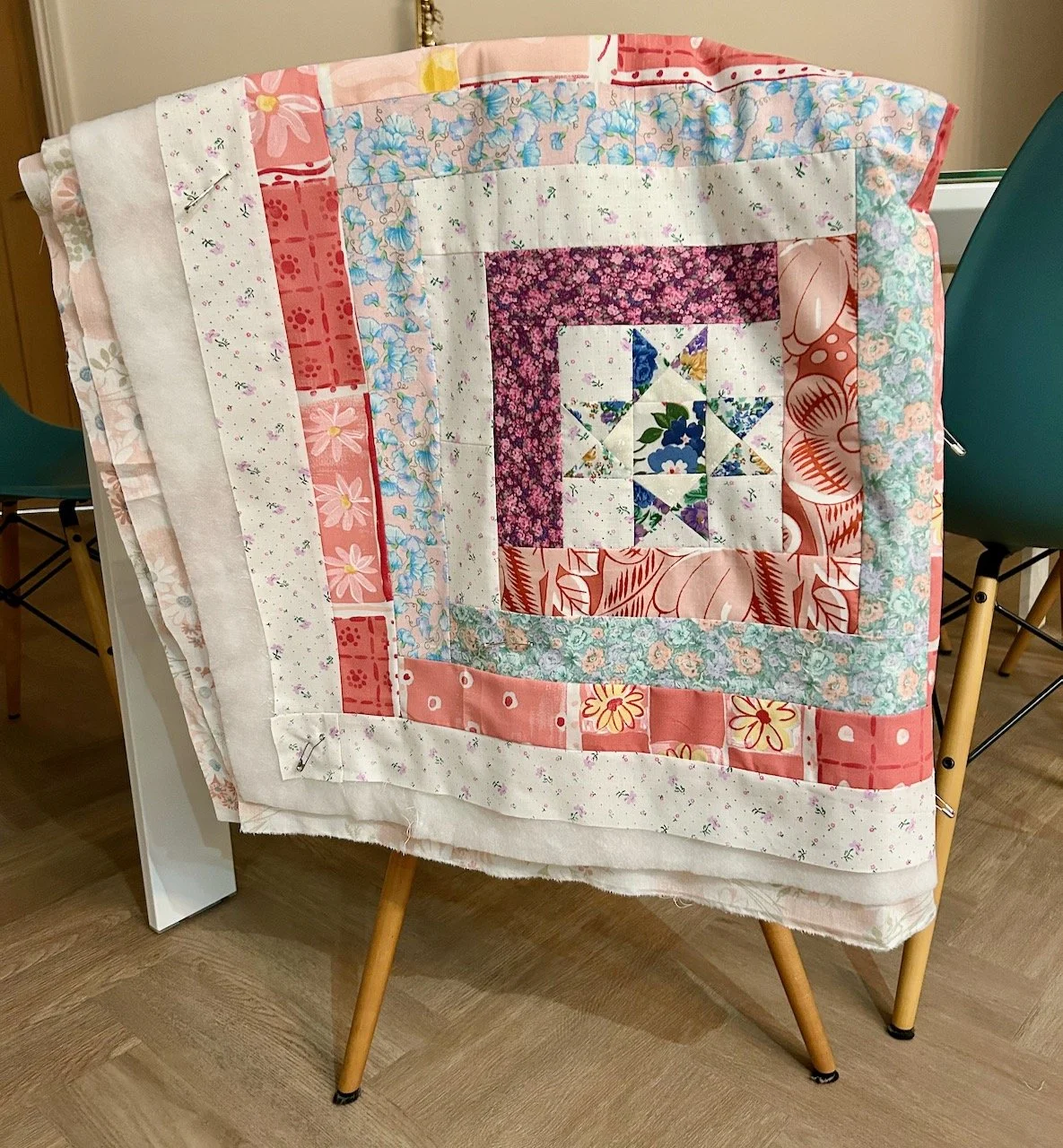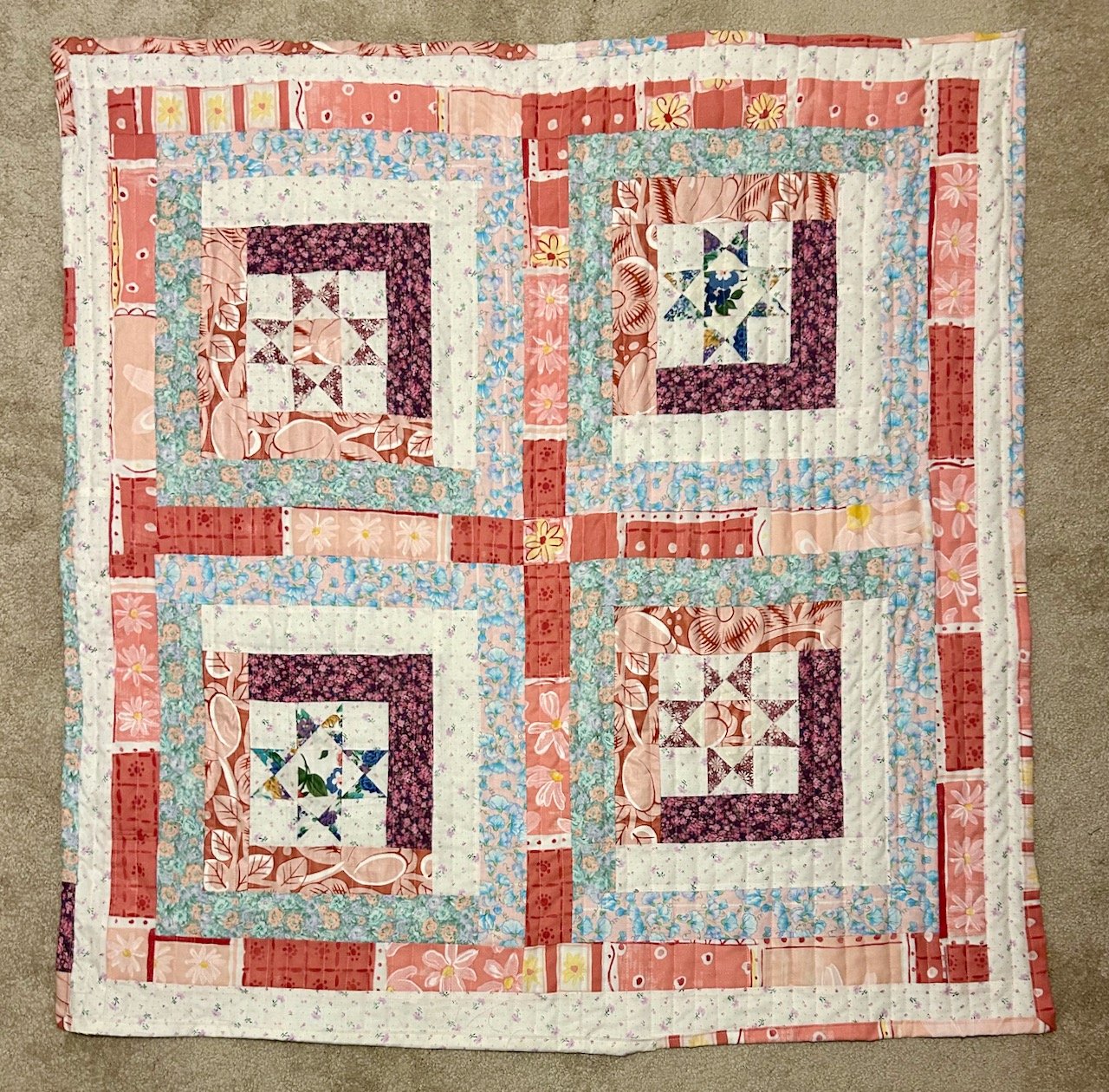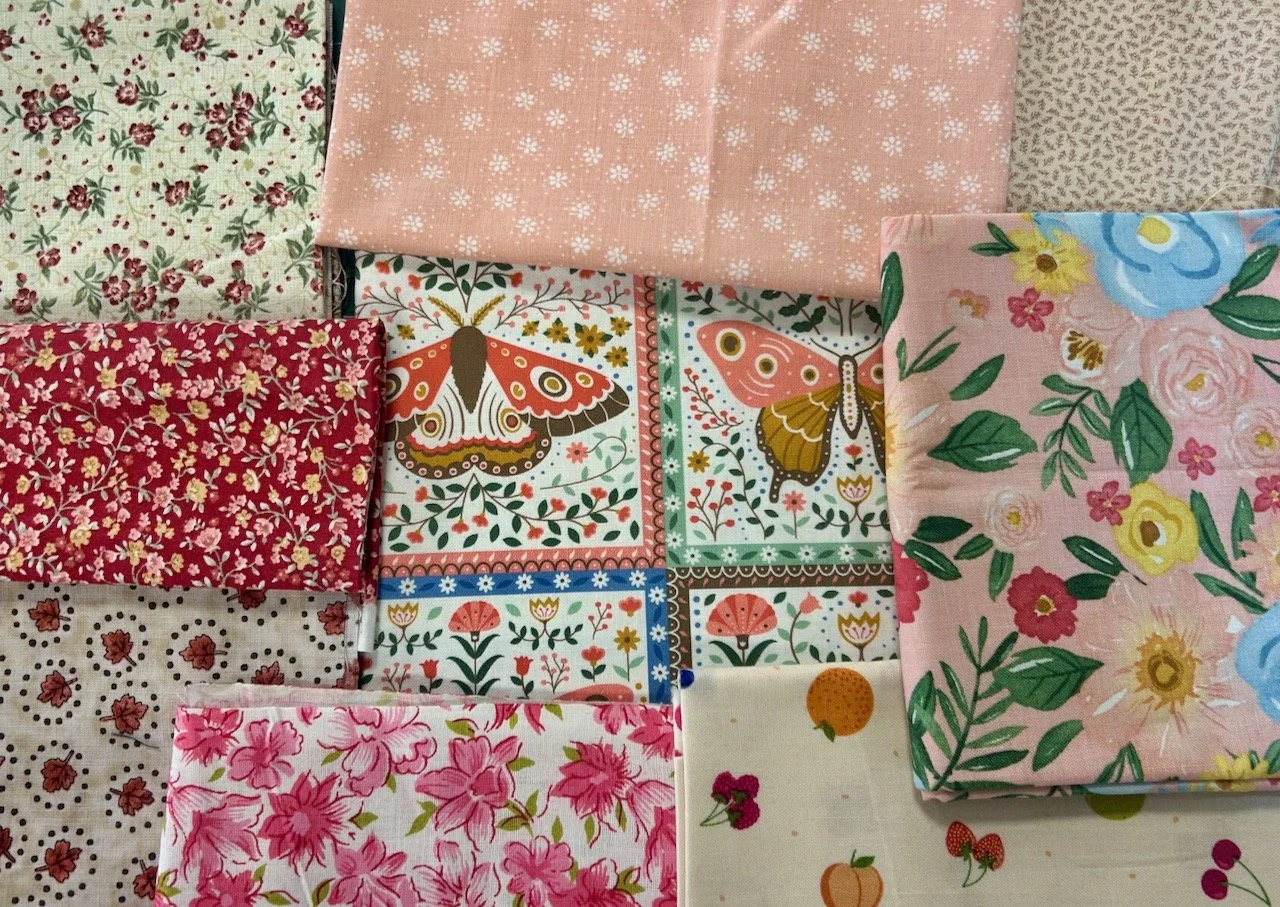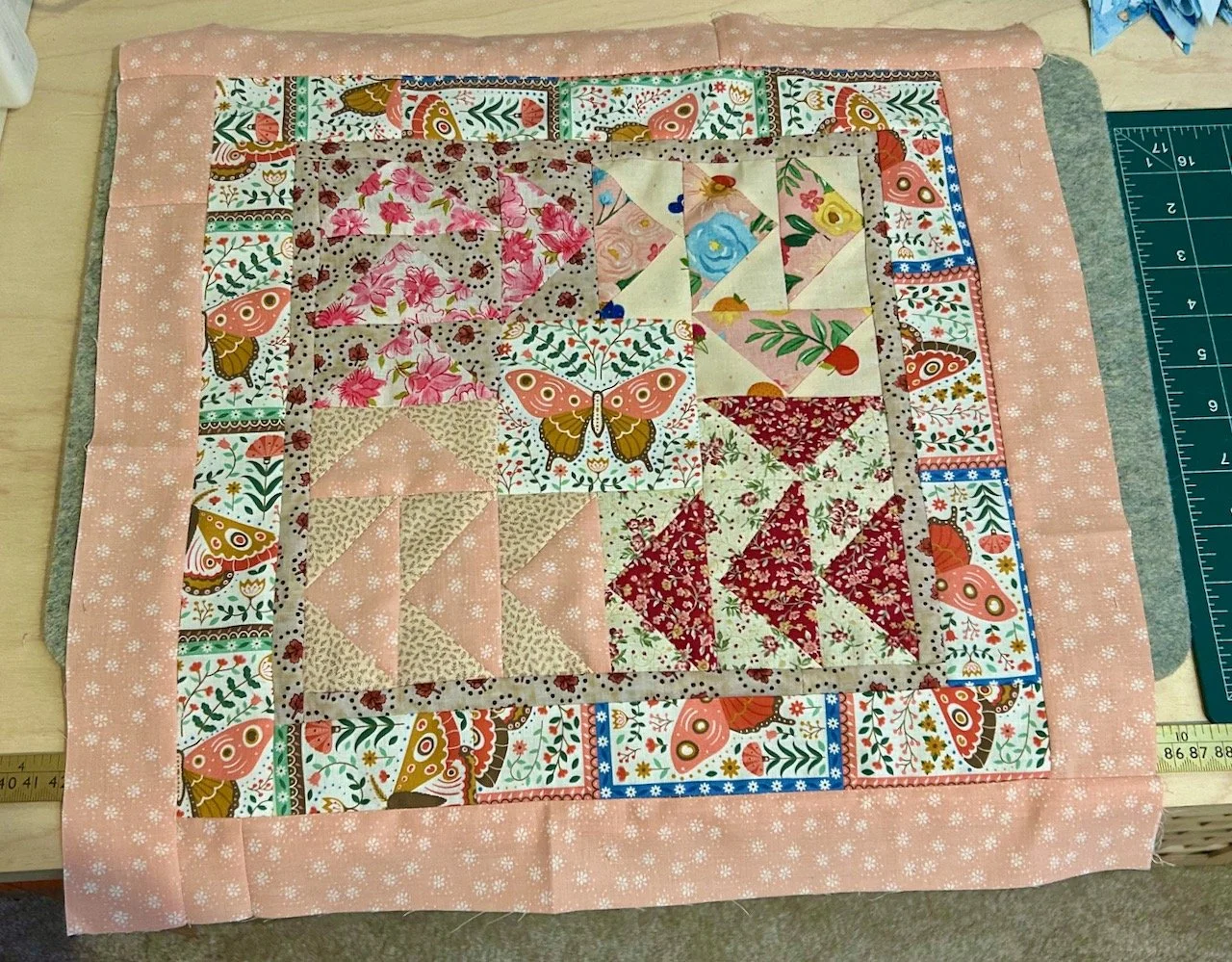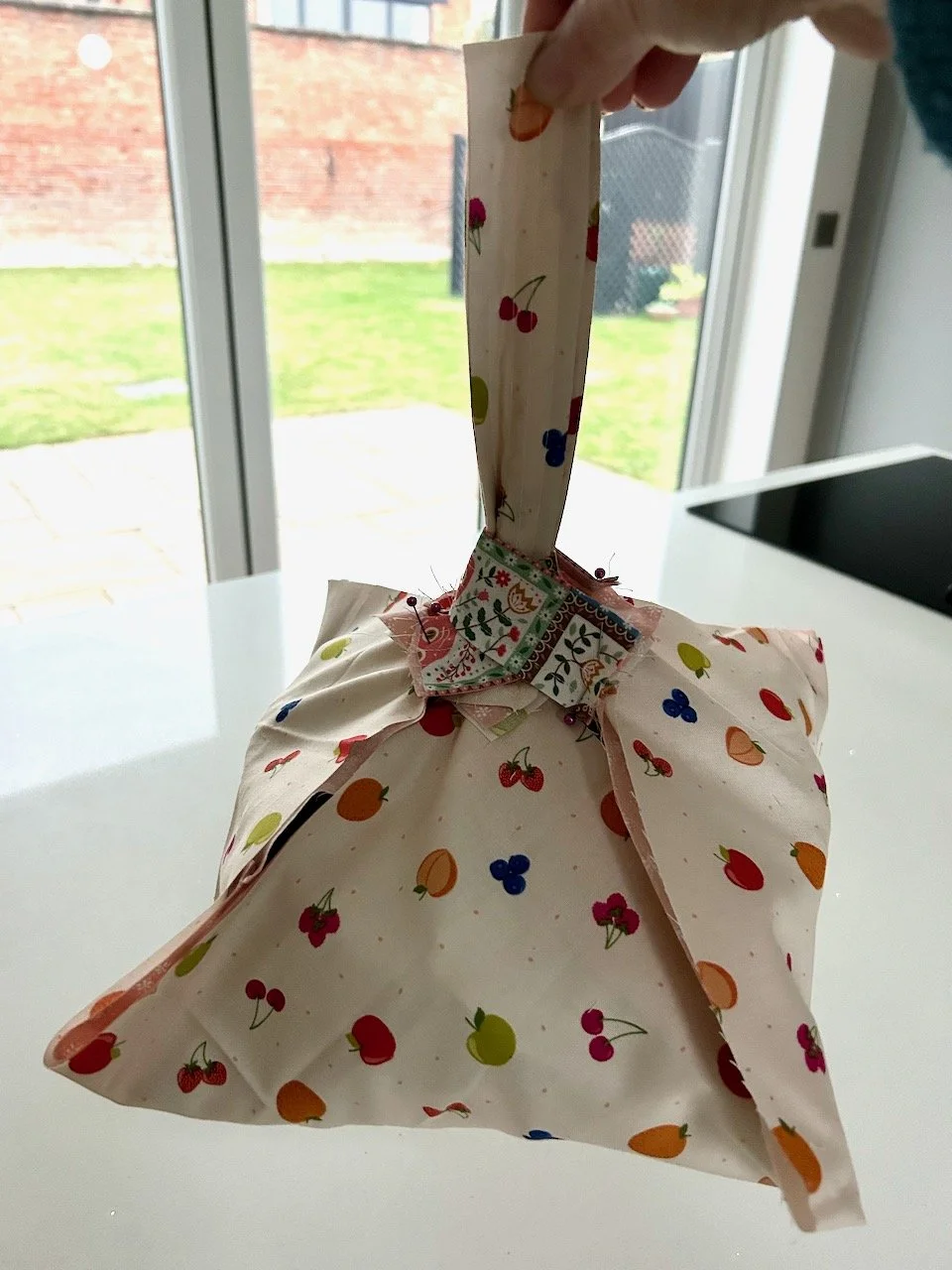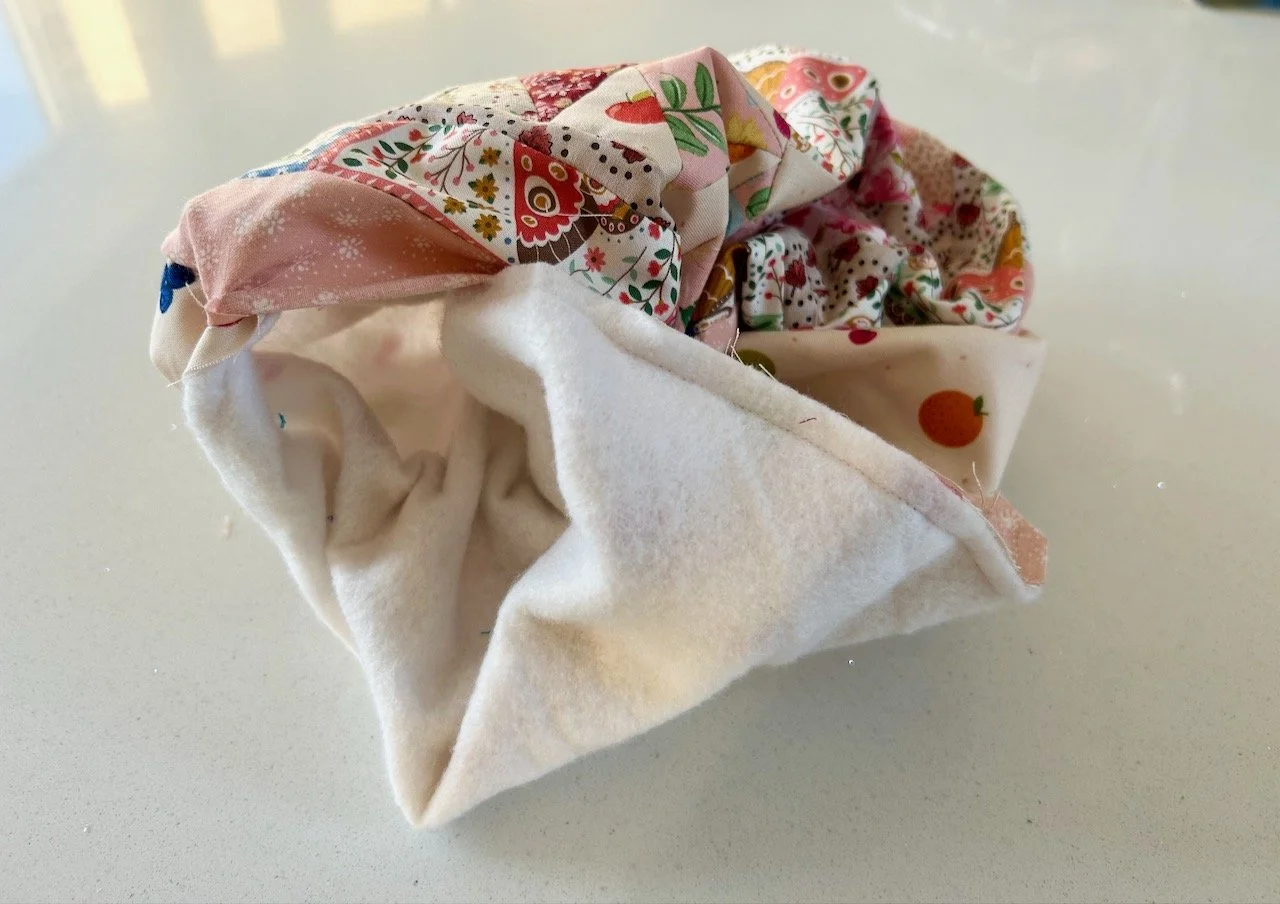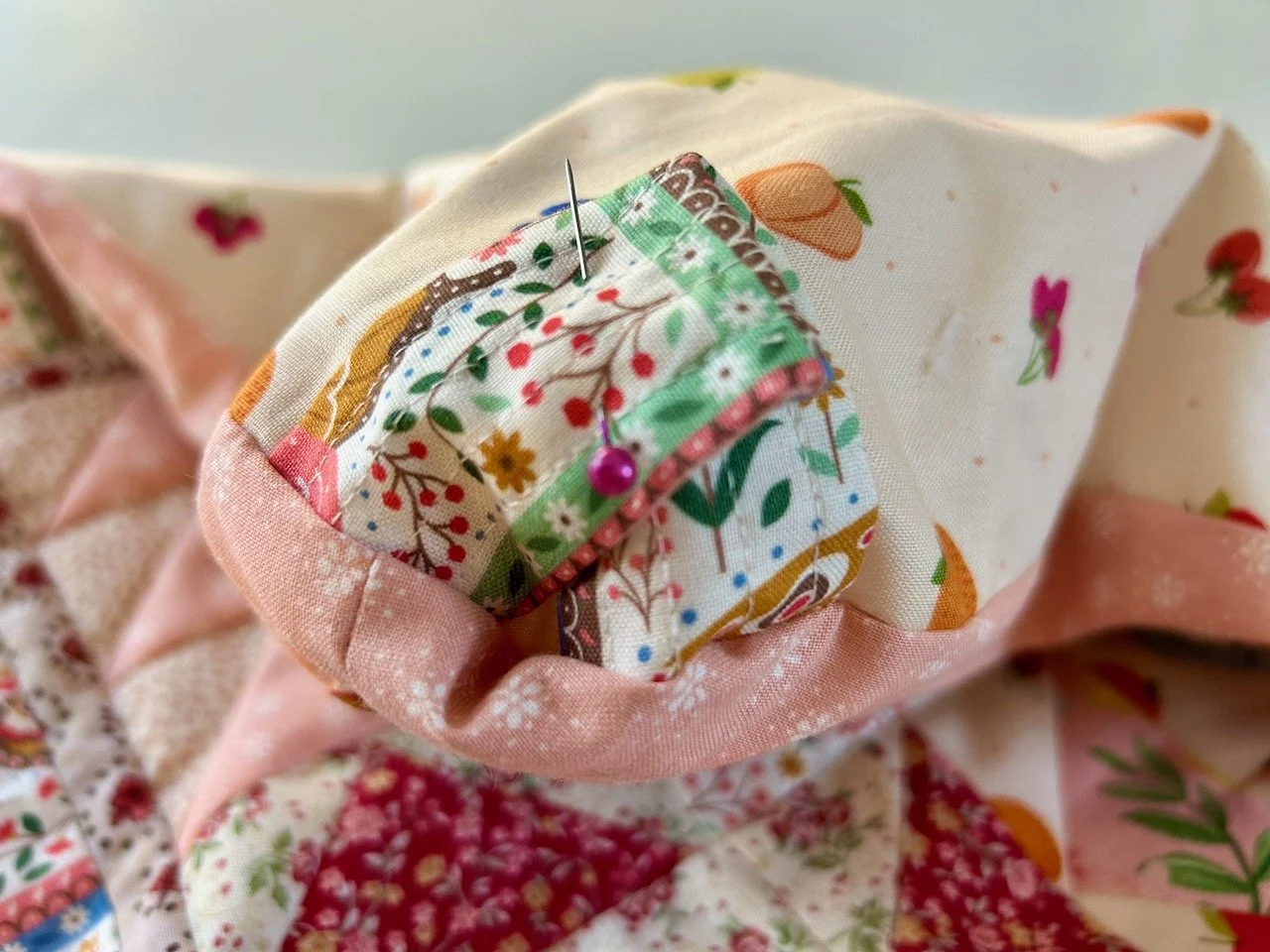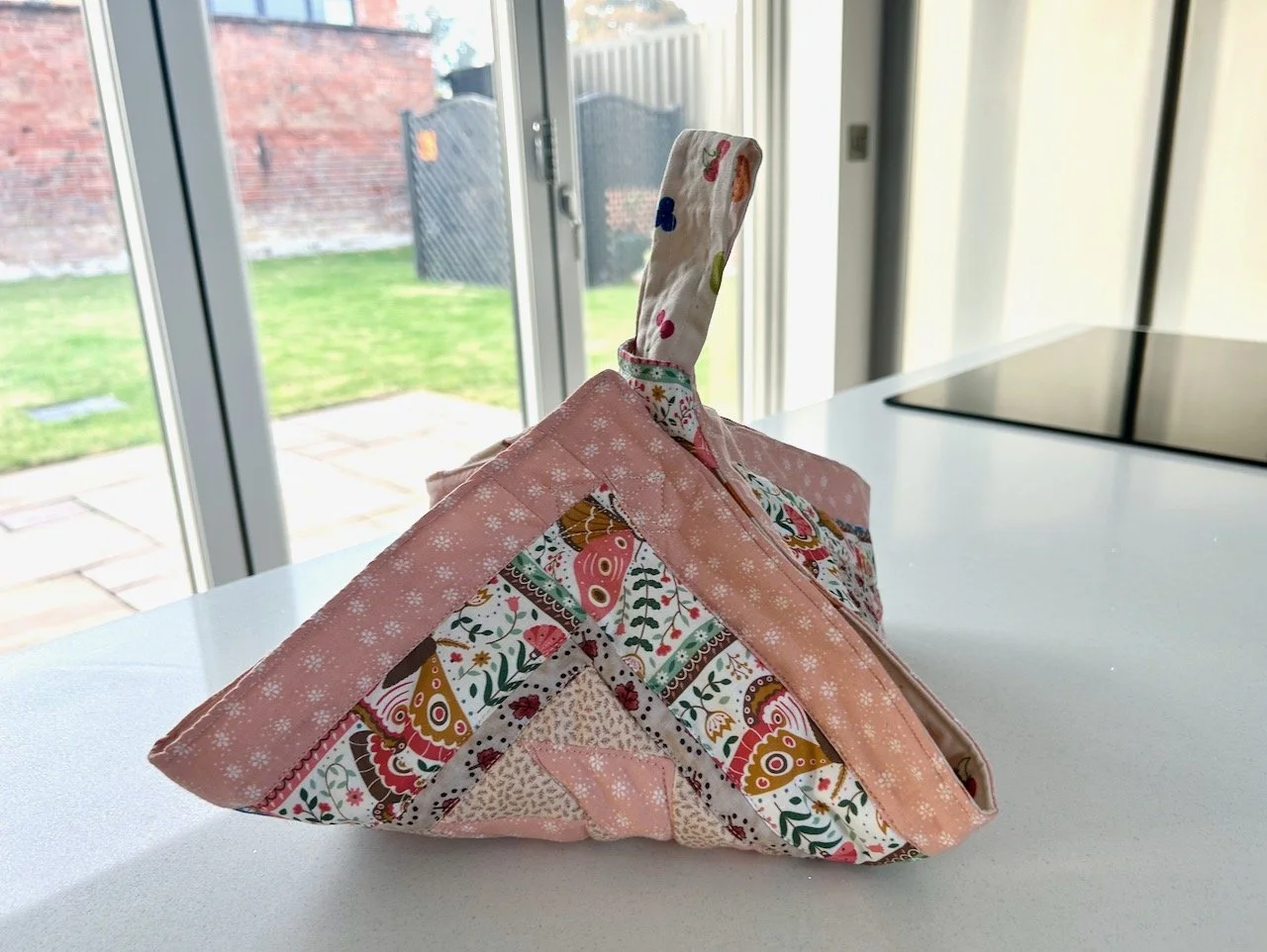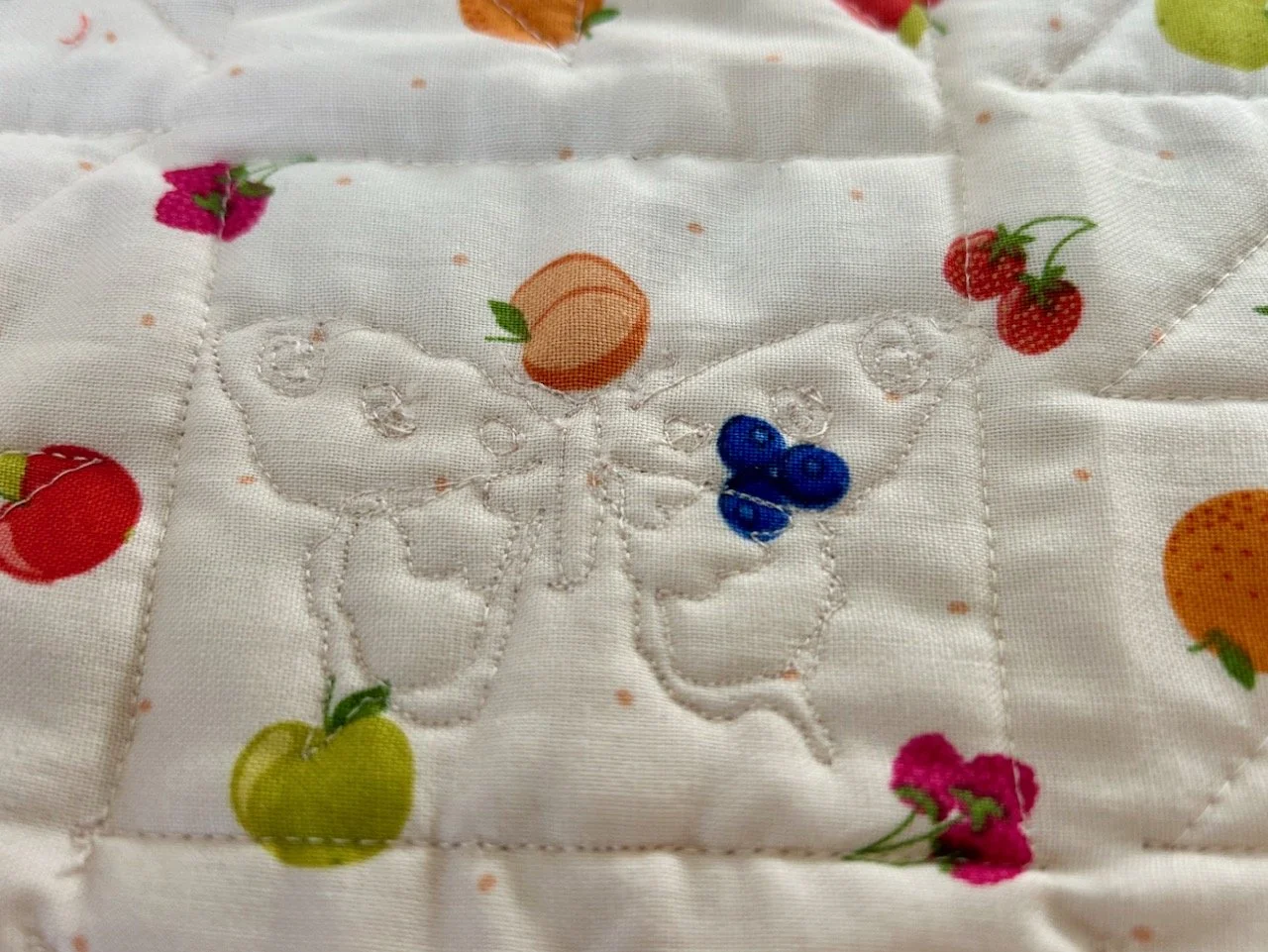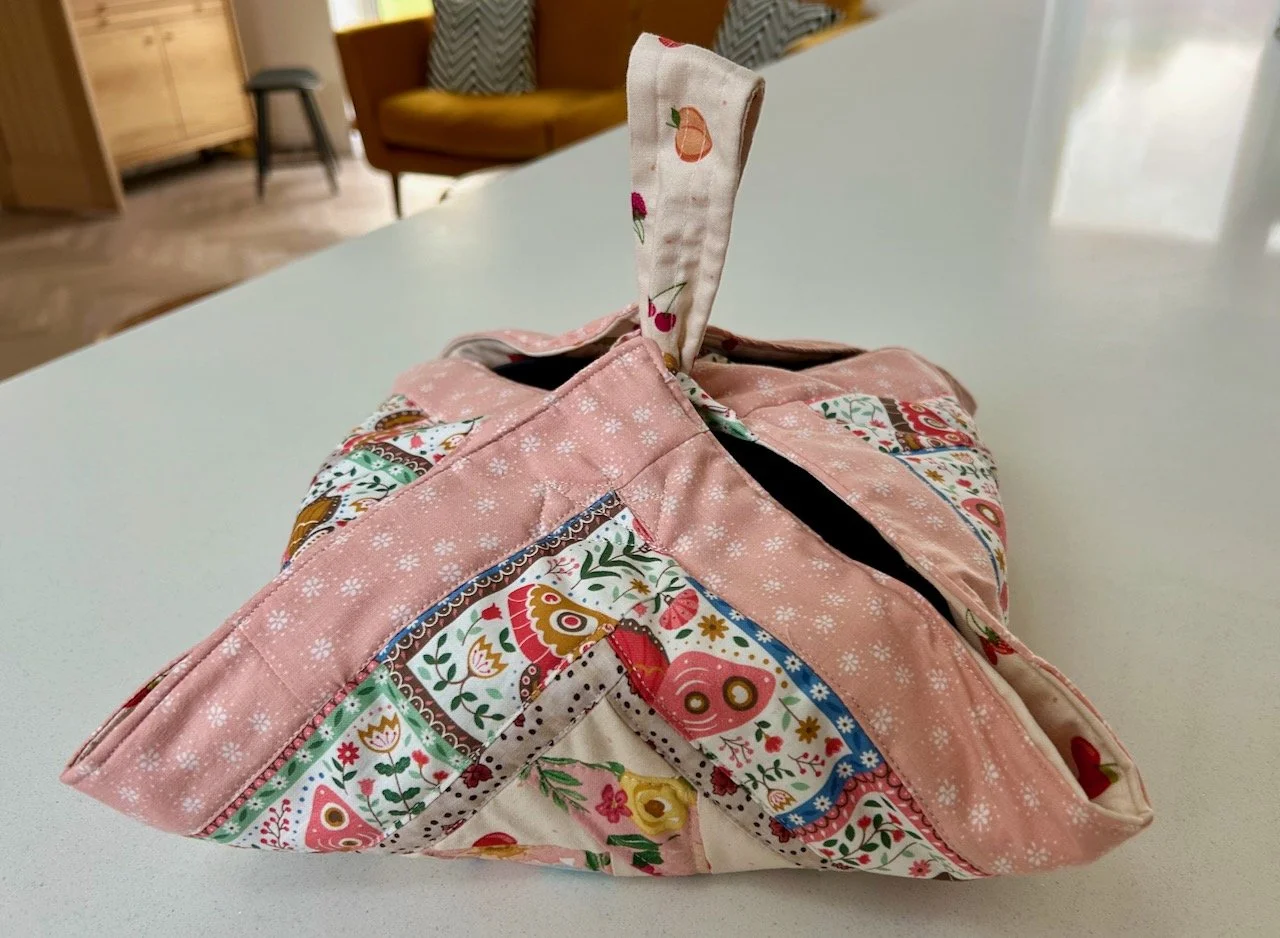You’ll have seen that I plan to complete Sherri’s mystery block a month quilt and in my last post I shared the test blocks which I made into my twelfth charity quilt, today I’m sharing the centre block I made for my own quilt.
As I said yesterday I’m a fan of this block, and making it for my own quilt didn’t change my mind on that.
As it’s a ‘star block month’ that meant I’d be using the navy blue fabrics from the range I’ve chosen for this quilt, but I wasn’t sure if I wanted to use a selection of the three available, or just one. I knew from my blocks yesterday, and from the examples from Sherri that the triangle next to the inner square looked best if it was a lighter colour, and so I branched out a bit and opted for a non-navy fabric.
With that decision made I decided to go for a single navy fabric for the block - my gut instinct was to use this green and pink patterned fabric as I felt I hadn’t used that much. And once I’d finished the block I knew that was the right call as laid alongside the blocks that will be closest to it, that fabric didn’t appear. Phew.
Not only did the block come together quickly, despite the numerous triangles, it was one that seemed to match and keep its points without too much work on my part - maybe that’s why I liked it?!
But it’s done, and pressed and is now hanging alongside the previous month’s blocks. There’s just two more blocks to go, and then the real work of assembling and finishing the quilt starts. I’ve read today that Sherri will be sharing more about finishing the quilt next week, as well as the final block, so it’ll be good to see what’s in store - and I must remember to factor in actually finishing this quilt into my quilt plans for next year!
Join me next month to see how I get on with the next mystery block, and check out my previous posts for my mystery block quilt or the charity quilts made from the test blocks.

